Video: NCIA Today – May 14, 2021



 By Rachel Kurtz-McAlaine, NCIA’s Deputy Director of Public Policy
By Rachel Kurtz-McAlaine, NCIA’s Deputy Director of Public Policy
Has your text messaging (SMS) service had interruptions? Are you worried about more interruptions?
We forget how much we rely on text messages when we order things. Text messages keep us updated at every step so we know when things are ready for pick up or are there to be delivered. We also appreciate our favorite businesses texting us sales and discounts.
NCIA members have been making us aware of text messaging (SMS) service interruptions, or complete shutdowns, either for marketing or order fulfillment. We’re still gathering information to understand the full extent of the issue and what we can do to assist the industry with making sure we are afforded our rights.
A few SMS platforms, including At&t, Twilio, Avochato, & T-Mobile, have announced they are terminating services for cannabis companies. Twillio’s website makes it clear they don’t want to deal with cannabis-related companies.
“SMS or MMS messages related to cannabis are not allowed in the United States, as federal laws prohibit its sale, even though some states have legalized it. Similarly, messages related to CBD products are not permissible in the United States, as certain states prohibit its sale. Twilio policy is reflective of US carrier rules in this area, and there are no exceptions to this policy.
Twilio defines a cannabis-related message as any message which relates to the marketing or sale of a cannabis product, regardless of whether or not those messages explicitly contain cannabis terms, images, or links to cannabis websites.”
This crackdown has come on the heels of the implementation of 10DLC, new telecommunications regulations intended to address the pervasive problem of spam (not specific to the cannabis industry). Telecommunications companies have used it as an excuse to exclude legally regulated cannabis companies, or at least significantly interfere with their operations.
Unfortunately, Twilio is a huge SMS platform that has been used by some major players in the industry that provide niche technical platforms for such services as delivery, marketing, and loyalty points. Numerous businesses throughout the cannabis industry rely on those platforms to reach their customers and to better facilitate delivery and order pickups.
We know the impact has been widespread, but some companies have been able to find alternatives, either through workarounds or other SMS platforms that are not cracking down as hard. Alternative workarounds can include the service platform having extremely limited templates for what can be sent via text in order to make sure there is no language that can be perceived as relating to cannabis sales or any links that can be followed back to a cannabis website.
Some businesses have found alternative platforms, but those companies may charge more because they are willing to screen every message that gets sent prior to it getting sent out via SMS. Because of the time and labor involved, that option can really only be available for marketing texts and not the automatic texts that come with ordering and pickup or delivery. It is unclear if the big telecommunications companies will eventually shut those down as well.
While we would love for that not to happen and for the issue to work itself out, until we deschedule we know that these issues will continue to surface. Even if you personally have not been affected by the SMS crackdown, it is important to understand what is happening in the industry because it could affect your business next.
We have the ability to come together as an industry to address this issue. We have been working with legal experts to better understand what is happening, and we have the potential to fight this attack on the legal cannabis industry if there is enough interest.
We want to hear from you. Have you had an interruption in service? If so, have you found a workaround? Is the workaround satisfactory or a huge pain for your business? Are you worried about interruptions in your service in the future? Please contact Rachel if you have any information or personal stories to share. We will respect your privacy in these matters.

 by NCIA’s State Regulations Committee
by NCIA’s State Regulations Committee
Contributing authors Jennifer Gallerani, Tim Gunther, Elise Serbaroli, and Erin Fay
The COVID-19 pandemic and subsequent recession powerfully demonstrated that the cannabis industry is providing essential medicine and products to countless Americans, as well as creating jobs and tax revenue. Retail sales of medical and adult-use cannabis in the United States were on pace to eclipse $15 billion by the end of 2020, and if you include ancillary products and services, the industry is estimated to reach $68.4 billion in 2021. The U.S. cannabis industry is experiencing rapid job growth, boasting an estimated 300,000 full-time jobs in 2020. Those numbers are expected to almost double by 2024. Over the next four years, the industry is expected to add nearly 250,000 full-time equivalent positions. By comparison, roughly 271,000 people currently hold beverage manufacturing jobs. These numbers demonstrate with sureness that the U.S. cannabis industry is on a high-growth trajectory, which makes it imperative that the market operate under a practical regulatory framework that benefits both regulators and operators.
Most states that have approved some form of legal cannabis sales (medical and/or adult-use) have also selected a single, mandated technology platform that all operators must use to track and trace their cannabis seeds, plants, and end products. Some iterations of the current track and trace model — which is primarily centralized approach — sets businesses, employees, and regulators up to fail. Of course, it also further limits the competitiveness of the regulated market with the unregulated market, and the ability for policymakers to be confident that cannabis consumers in their states are obtaining taxed, tested, and regulated products.
Local governments are missing out on tax revenue, and businesses (both large and small) are forced to spend unnecessary resources on a system that is fundamentally flawed. The centralized model, contracting with one specific software provider, and mandating operators to use that software provider in order to stay compliant, is wreaking havoc on the entire U.S. cannabis industry and is not sustainable for a federally-legal and global supply chain.
As a team, the National Cannabis Industry Association’s State Regulations Committee’s Technology and Compliance Subcommittee has spoken to regulators, operators, and international technology providers in the interest of presenting a practical track and trace solution to benefit the industry as a whole. This is the first blog in a series that will highlight the issues that cannabis operators and regulators are facing because of the current centralized state-mandated track and trace model. We propose that the U.S. cannabis industry operate under a more practical framework that has a higher probability of success for regulators and cannabis businesses through slight changes and improvements based on proven best practices.
Track and trace systems serialize assets to identify where assets are (track) and to identify where assets have been (trace). Track and trace is not something new. It is the globally acknowledged standard for product movement and reconciliation in both the Pharmaceuticals and Consumer Packaged Goods (CPG) industries. A secure track and trace system combines material security and information security elements to confirm assets are legitimately produced and sourced, following a pre-defined and auditable path.
As the regulated cannabis markets started to take shape and mature in 2012, one of the driving factors that shaped the need for a track and trace system was the 2013 U.S. Department of Justice Cole Memorandum (Cole Memo). The Cole Memo indicated for the first time that the federal government would only intervene in states that failed to prevent criminal involvement in the market, sales to youths, and illegal diversion to other states.
The first four states to legalize adult-use cannabis were Colorado, Oregon, Washington, and Alaska. All four of these states instituted a market-based licensing system to regulate the commercial activity of cannabis sales. The intentions of the newly instituted policies were two-fold: protect consumer health and minimize diversion, both of which align with the core principles of the Cole Memo. To meet these intentions, the states instituted procedures for inventory control and tracking documentation using a state-mandated centralized model, in an effort to create a transparent and controlled system of oversight within the cannabis industry.
As the industry has developed over the years, most states that have approved some form of legal cannabis sales have selected a single mandated technology platform that all operators must use to track and trace their cannabis seeds, plants, and cannabis products. As shown in Figure 1, the majority of legalized states have chosen METRC as their exclusive contractor of track and trace services.
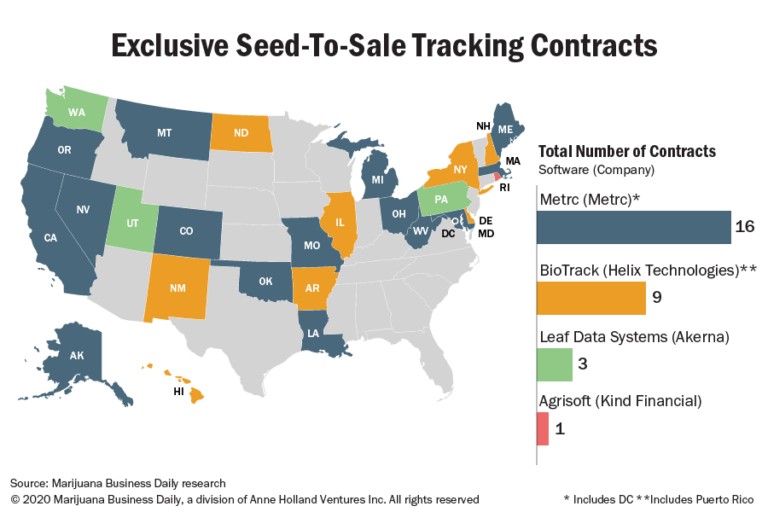
Figure 1: https://mjbizdaily.com/metrc-sees-sale-tracking-opportunities-in-new-cannabis-markets/
The legal cannabis market has changed significantly since 1996 and it is important for the industry to re-evaluate the intention and implementation of track and trace. Regulatory bodies contracting with one track and trace technology provider and mandating operators to use that specific provider in order to stay compliant is problematic for many reasons. Time has shown that the current centralized model is fiscally irresponsible and ultimately counterproductive, with significant negative externalities, including ethical concerns such as anti-trust issues. Most recently, an Oklahoma cannabis operator (seeking class-action status) initiated litigation against the state’s Medical Marijuana Authority (OMMA), alleging that the state exceeded its authority by requiring licensees to pay for a state-mandated track and trace program, and that the state’s contract with METRC creates an unlawful monopoly, among other claims.
To provide an analogy, let’s think about how businesses are required to report taxes. The IRS sets out certain rules and every business must report their income and assets according to that framework. Technology providers (such as TurboTax, Tax Slayer, H&R Block, etc.) have built scalable products to support businesses in reporting their taxes. The IRS does not mandate that businesses use one single specified software in order to report their taxes. Doing so would kill competition, introduce a monopoly, and eliminate any incentive for the technology providers to improve their product. By the IRS allowing free competition over the realm of tax preparation and processing software, the public benefits from the technology companies being incentivized to update and improve their software features and benefits.
The centralized model is crippling the entire industry as system failures are occurring on a more frequent basis, and its after-effects are causing a more detrimental and wide-ranging impact as the industry grows at an exponential rate. Most recently, METRC’s integration functionality (how third-party business operations software communicates to the state’s system) was down for more than fourteen days in California, causing significant problems in the nation’s largest cannabis market. One software provider and its tag-producing partners are benefitting, while setting industry regulators and operators up to fail. One software provider cannot meet the current or future needs of regulators and operators, especially not on a national level. Meanwhile, there are many excellent software providers that specialize in track and trace. The free market should determine the most efficient and user-friendly approach to allow businesses to stay compliant and accurately report to the appropriate regulatory authorities.
By leveraging the knowledge and experience the industry has gained over the last 20 years, we can incorporate best practices from other industries’ and other markets’ track and trace systems, and set regulators and operators up for success.
Join us as we dive deeper into the issues surrounding compliance and track and trace in the cannabis industry. Our multi-part blog series provides an in-depth look into the technical shortcomings of the current centralized approach and provides a roadmap for implementing a distributed model approach. Some of the disadvantages we will cover in the subsequent posts include:
Impact of System Failure: The current centralized model provides a single point of failure: if the system goes down, all licensee operations must stop operating entirely. In some cases, operators may manually record activity during a system failure, and then manually enter the activity when the system resumes. This introduces a high risk of human error. No backup system or alternative means of recording through the use of technology exists since the state relies on only one system.
Challenges with Scalability: The history of performance with centralized track and trace systems demonstrates that there are significant challenges in scalability because of multiple system failures and shutdowns. The system would benefit from a more advanced track and trace capability, specifically with its API (Application Programming Interface). Many times it is not the technology of the licensee system, but the technology design of the state-mandated systems.
Fiscal and Environmental Impacts: Licensees are required to purchase plant and product tags from the single state-mandated vendor, which creates a fixed price system that is typically not in favor of a licensee. It is also creating a sustainability issue in the industry, as the plant and product tags are single-use. More operators are speaking up about the waste it is generating in our cannabis industry.
Interested in joining us in establishing an effective and scalable track and trace framework for regulators and operators in the legal cannabis space? Click here to stay updated on the State Regulations Committee, and the efforts that it’s Technology and Compliance Subcommittee are taking to improve and advance track and trace nationally. Let’s close the informational gap between operators and regulators, and help the entire industry move forward together.
Stay tuned for the next two blog posts in our multi-part series!
#cannabisindustry #legalcannabis #trackandtrace #wearethecannabisindustry #cannabiscompliance


 by NCIA’s Cannabis Manufacturing Committee
by NCIA’s Cannabis Manufacturing CommitteeDespite prohibition, the cannabis industry is not behind the curve of sustainability progress. While other industries were inventing modern Cloud-based quality control/distribution systems and making stuff out of plastic, cannabis producers were maximizing yields per watt and creating stronger concentrates in attempts to get the most out of their value streams while staying under the radar. Now all industries are racing towards a more sustainable future and the cannabis industry has the opportunity to show that it can be a good example, even a leader in sustainability. Regardless if it is in preparation for competition or regulation, now is the time to start building more sustainable, energy-efficient, and overall lower footprint businesses.
As the manufacturing branch of the cannabis industry paves its way into the future, the processes involved need to be made environmentally sustainable and best practices need to be shared and standardized to ensure product safety and industry longevity. Collecting and sharing data from manufacturing facilities is the ideal way to achieve these sector goals.
Environmental sustainability is a multi-discipline effort. Experts in engineering, emissions, air quality, worker health and legal matters should be relied on for educating and guiding businesses into a more sustainable future.
While cultivation is one of the main focuses of the cannabis sustainability effort, manufacturing procedures are also prime targets for sustainable advancements. Due to the nature of the organic chemical processes used to produce consumables, some of the materials and practices could have a negative impact on both worker and environmental health if not addressed and handled properly. As a best management practice, regulated cannabis manufacturers typically operate closed-loop systems, which greatly reduce certain dangers, but this can require other more energy-intensive systems. As these relatively new processing techniques are being pioneered, we need more data to understand how they can be made more efficient and sustainable. For various reasons — such as intellectual property concerns — advancements in sustainable practices are often not shared and therefore not visible to potentially become a standard process that ensures product and consumer safety.
The scientific improvements for manufacturing cannabis into consumer products in high demand have outpaced regulations. From process design and equipment to processing material sourcing, the manufacturing branch of the cannabis industry has much to offer the future of sustainable cannabis products. In many jurisdictions today, regulators have hastily opted for vertical, prescriptive regulations which have left many manufacturing operations without the leeway required to innovate more sustainable process strategies. Even more businesses with the legal leeway simply do not want to push the envelope in today’s regulatory climate. More forward-thinking, regulation-savvy equipment manufacturers have begun focusing on lower energy-use in their newer products as a selling point. The industry as a whole could be making progress much faster if regulators focused on performance standards for manufacturing facilities.
Strategies inspired by building and process heat recovery offer dozens of basic possibilities when it comes to implementation in a cannabis manufacturing facility. Using the energy released during solvent condensation for solvent evaporation is a prime example. Connecting liquid-cooled equipment with the building’s central plant system is another. These are big ideas that could be implemented in different ways with different efficiencies. Intelligent use of insulation, exhaust recirculation, odor mitigation, ventilation minimization, demand-control ventilation for providing makeup air, etc. could also make significant differences. Data collected from actual operating facilities experimenting with different strategies will be the best guide going forward in determining what the best energy saving strategies are.
In an effort to prevent unnecessary Volatile Organic Compounds (VOC) emissions it is important to maintain proper solvent transfer and storage, perform extraction equipment inspections, and ensure a maintained inventory and handling of solvents on site are a part of a facility’s standard operating procedures. Best practice for extraction and post-processing dictates the use of butane, propane, CO2, ethanol, isopropanol, acetone, heptane, and pentane as solvents to encourage safe consumer products.
Carbon filtration is also the best management practice for controlling cannabis terpenes (VOCs) and odor emissions. It is important to install properly engineered molecular filtration systems (aka carbon scrubbers) that are sized appropriately for a facility’s ‘emission load’ and don’t exceed the maximum cfm rating for air circulation through the filter. To prevent VOC and odor breakthrough, it is imperative to inspect and conduct regular maintenance of HVAC systems and carbon filters. A standardized method for measuring the lifespan of carbon is by using a Butane Life Test, which equips manufacturers with the data to know how to manage their carbon replacement schedule effectively, minimizing unnecessary carbon waste. Additionally, processors can conduct air sampling to detect and measure VOC and odor levels in their facilities and the data can be used to validate the impact of control technologies further protecting worker and environmental health.
Proper VOC and cannabis odor control from manufacturing processes helps reduce community odor complaints and improve neighborhood relations. It also improves public and environmental health by reducing local ozone concentrations. Proper emissions control when running cannabis manufacturing processes and handling chemicals helps to shift the industry at large toward sustainable and environmentally conscious business practices.
Cannabis manufacturers are seeing big changes on the horizon. Increased legalization brings increased competition and inevitable M&A activity. Whether a business aspires to compete on the world stage or to be acquired in one of the coming green waves, there are actions that can be taken today to help cannabis manufacturers maximize their value to both customers and potential acquirers.
One of the most important assets a company can have — both to compete effectively and to attract purchasers — is intellectual property. Intellectual property, or IP for short, is the term for an intangible asset that has been afforded certain legal protections to solidify the asset into a commodity that can be bought, sold, and licensed. IP can have a negative connotation in some circles, mostly resulting from misconceptions in the law but also rooted in IP abuses by unscrupulous “trolls.” In reality, IP is an important tool to help companies protect their hard work and, when properly deployed, intellectual property can increase transparency into cannabis manufacturing processes and open new avenues of scientific advancement.
Intellectual property broadly covers a number of different types of rights. Patents protect new inventions like processes, machines, compositions of matter, ornamental designs, and plant genetics. Patents can grant relatively broad rights to these ideas, but with substantial additional costs and scrutiny.
Similarly, copyright can protect creative works, like writings, drawings, and sculptures. But many do not recognize that copyright can also protect compilations of data that have been creatively selected or arranged. Data and algorithm copyrights are relatively nascent, but they promise to play a large role in the intellectual property landscape of the future cannabis industry.
Another sect of intellectual property, trademarks, is all about protecting a brand: the names, logos, slogans, and overall look that tells customers that a good or service is from a particular company. Federal trademark registration is unavailable for federally illegal goods and services, but that does not mean that federal trademark protection is unavailable to cannabis brands. Many companies are using the zone-of-expansion doctrine baked into federal trademark law to set up registrations on related legal products (smoking/vaping devices, clothing, and even CBD edibles) that can be expanded to cover THC products when federally legal.
The nuances and requirements of these property rights — along with other IP rights like trade secrets and trade dress — are highly fact-specific, so involve a good IP attorney to guide your strategy from the start.
Now is the time to start building more sustainable, energy-efficient, and overall lower carbon footprint businesses and the emerging legal cannabis industry is well-positioned to be the leader. If manufacturers are incentivized to safely share processing data directly or through emerging data collection and tracking platforms, the industry will make major advancements towards more environmentally sustainable practices. Environmental impact areas, such as air quality, energy, water, soil waste, and community all need to be considered by the manufacturing arm of the cannabis industry. Regulators can help push the industry forward by reducing negative impacts in these areas though focusing on performance standards for manufacturing facilities and their processes. Lastly, understanding that IP, including trademarks, can in fact increase transparency into cannabis manufacturing processes and open new avenues of scientific advancement will help position operators for M&A activity coupled with proper legal representation. These factors work together to protect the environment and communities, as well as future-proof manufacturing operations setting up the rest of the cannabis industry for longevity and federal legalization.


by Michelle Rutter Friberg, NCIA’s Deputy Director of Government Relations
If you’ve been following along with federal cannabis policy closely, you know that the SAFE Banking Act has passed the House, comprehensive reform will be revealed soon, and that there have been a few other bills that have been introduced. Today, we’re going to take a look at the most recently introduced cannabis bill:
Name: H.R. 2932, the Veterans Cannabis Analysis, Research, and Effectiveness (CARE) Act
Lead Sponsor(s): Reps. Mariannette Miller-Meeks (R-IA) and Nancy Mace (R-SC)
Status: Referred to the House Committee on Veterans’ Affairs on April 30, 202
What does it do?
This bill directs the Secretary of Veterans Affairs to conduct research on the use of medical cannabis to treat veterans suffering from Post-Traumatic Stress Disorder. In addition to allowing for research on PTSD, the bill also states that the department look into the efficacy of cannabis for chronic pain and “other conditions the Secretary determines appropriate.” The legislation also specifies that the studies must involve plants and extracts, at least three varieties of cannabis that contain various amounts of THC and CBD and include “varying methods of cannabis delivery, including topical application, combustable and non-combustable inhalation, and ingestion.” Notably, this new bill was introduced by two freshman GOP-Congresswomen with strong ties to the military community: Miller-Meeks is a veteran and Mace was the first female graduate of The Citadel.
While this bill is the most recent cannabis and veteran-related legislation to be introduced in Congress, it certainly isn’t the only (or last) one! Just a day before, a similar bipartisan, bicameral bill, known as the VA Medical Cannabis Research Act, was introduced by Reps. Lou Correa (D-CA) and Peter Meijer (R-MI) and Sens. Jon Tester (D-MT) and Dan Sullivan (R-AK). That bill would require the VA to perform clinical research on the safety and efficacy of medical cannabis in treating veterans’ post-traumatic stress disorder and chronic pain. It would also require the VA to provide Congress with a report dictating its research plan and provide progress updates while conducting the study.
In February, Sens. Feinstein (D-CA), Schatz (D-HI), and Grassley (R-IA) introduced the Cannabidiol and Marijuana Research Expansion Act, which would encourage valid scientific and clinical research on marihuana and its compounds, expand sources of research-grade marihuana, and promote the commercial production of FDA-approved drugs derived from CBD or other marihuana compounds.
Congressman Steube also has his Veterans Cannabis Use for Safe Healing Act, which is aimed at ensuring that military veterans aren’t penalized for using medical cannabis in compliance with state law. The legislation also stipulates that Department of Veterans Affairs (VA) doctors are allowed to discuss the risks and benefits of marijuana with their patients.
With all of these bills, one thing is clear: additional research and knowledge on cannabis as a safe and effective medicine for our veteran community is much needed. NCIA will continue to monitor these bills and advocate for legislation that would remove cannabis from the Controlled Substances Act entirely, ameliorating many of these issues. Catch our Government Relations team over on NCIA Connect to ask us any policy-related questions — see you there!

 By Deborah Johnson, MCA Accounting Solutions & James Whatmore, MAB Investments
By Deborah Johnson, MCA Accounting Solutions & James Whatmore, MAB Investments
NCIA’s Banking & Financial Services Committee
Part 3 of a 3-part series
In our first two blogs we took you from early concept, legal formation and early efforts through the early angel rounds. You have production in place with some equipment financing, getting you to early-stage revenues. Hopefully a smart angel investor is available to you for questions or direction. In the final part of this blog on funding your business, we will present some formal round structures, how you can best prepare for those finance rounds, and some ways to bring your friends along for the ride.
Everything you have done to date is going to be considered in a Series A round. What you have done and who you have surrounded yourself with will be looked at by potential investors. You have put in the work and built strong social capital. You have a diverse and strong team with expertise in your sector. The next level of investor will want to see how you tie it all together. These factors will be considered in light of your Total Addressable Market (TAM), valuation, use of funds, jurisdiction, and many other metrics. At this level a solid accounting team can produce Canna-GAAP (Generally Accepted Accounting Principles) financials to build a credible financial model. Having this current as you move through funding will give investors some level of comfort. As we have discussed, preparation is particularly important.
Alain Bankier, an active Angel investor, points out, “If you have brought on the right group of Angel investors, they are a prime source of excellent feedback, as you prepare your deck, your financials, and your pitch for the next round. Angel investors have seen 100’s if not 1000’s of company pitches and they can help you craft the most compelling presentation and they are your natural allies, as they have already invested and are motivated for you and the company to succeed!”
Long-term planning will help you define the total amount of funding you will need for certain milestones of development. A series of capital raises has some advantages over a single funding event. Each milestone you pass signals a value add to the company, and each subsequent round will be less dilutive. And the investor may see the project as de-risked, increasing their commitment through the follow-on rounds.
For each round there are several types of funding instruments: SAFE agreements, convertible debt, and preferred equity to name a few. Simple Agreement for Future Equity (SAFE) may be an option early in the funding plan. A SAFE note is a convertible security that allows the investor to buy shares at a future priced round. It has no maturity date and no interest rate. As such they are not debt and therefore do not accrue interest. But it also requires C-Corp status as the note goes on the cap table just like stock options. A convertible note is a common way to kick off a formal funding cycle and is dependent on future rounds as a trigger event. As a note it has a term of maturity and an interest rate; often there will be a cap on conversion value and a discount on valuation below that threshold. Once triggered, both of these may convert into shares of the company (or units of an LLC); what those shares are is described in the offering documents, usually summarized in a term sheet outline. These shares can have any number of rights or preferences attached to them. The fact that these are triggered by further rounds makes them a good part of an overall funding strategy.
The alphabet soup of rounds starts after the convertible note. The first equity A round will essentially sell some of the company to your investor; there will be a price, your valuation, and terms. As long as you are executing on the vision you have communicated to investors, each additional round will reflect your progress with a higher valuation and less attractive rights. The business put forth by you and your PowerPoint pals from the first blog in the series was worth a couple thousand dollars. Now you can apply many metrics on your sales, balance sheet, or milestone for a multimillion-dollar value.
Convertible debt and equity rounds are part of your long-term funding plan; so are new target investors. As you hit milestones and rise in valuation, the company becomes attractive to new investor classes. Certain funds have a minimum milestone they need to see before considering an investment. Pre-revenue, post-revenue, cash flow positive, market share, and total sales all have relevant hurdles for certain groups. Seed and angel investors may participate in a convertible note getting you to revenues, while an investment fund will only lead the A round with those revenues in place. If all is right, they will participate in B and C rounds as well; with larger and more sophisticated investors looking at the milestones you are currently achieving. The investors who value your milestone wins will take notice and start to circle.
As the investment in your company grows, the pool of investors shrinks. Although this may change in the near future, the traditional investment landscape is limited in cannabis; fortunately, there are several new and non-traditional sources of funding. Crowdfunding is a trend that has not escaped cannabis; however, the stigma has limited the platforms those in the industry have access to. Crowdfunding via Reg CF is the use of small amounts of capital from a large number of individuals. It is legal to be part of a cannabis business by investing up to $2,000 in exchange for ownership of a portion of the company. Through this method, a company can raise up to $5 million. Sites such as Fundanna, CannaFundr, Start Engine, Kickstarter, Crunchbase, Mazakali, Useed, Indiegogo, and SeedInvest provide platforms to market opportunities. There are various hurdles encountered here as well. Platforms can have banking issues as well. For example, 420fundme was shut down after their bank decided not to work with them. Also, some require the business to be in a U.S. state where cannabis is legal, or they only promote those businesses that impress them. So be sure to understand the sites’ rules and stay on top of regulations.
The REG A(+) is crowdfunding’s big sibling. This is an investment vehicle that is exempt from registration with the SEC that allows the general public and not just accredited investors to join the round up to $50 million in a 12-month period. GAGE, a Michigan vertical, successfully funded their recent expansion with a Reg-A. If you are talking to investment banking firms, this could be a good late-stage option to secure a large round of capital.
As you prepare to fundraise and have a clear understanding of where your business is in its lifecycle, you can put together the best capital raise for your project. Cannabis is a relatively new industry, and its murky legality means that roadblocks are likely. Be prepared to exercise all of your financing options. When raising funds for equity, all of the investors are looking for a liquidity event. So, whether your company eventually goes public or there is a merger or acquisition, they are not looking to invest in a so-called “lifestyle” company. As legality is resolved, many companies that are now on the sidelines looking in will be looking for opportunities to acquire and appear “established”. This is your window of opportunity to build a great brand, gain traction and be ready for when that happens.

Brad Douglass, Ph.D., EAS Consulting Group Independent Consultant
The Agricultural Improvement Act of 2018 (the “2018 Farm Bill”) helped to further define the pathway by which “hemp-derived” ingredients can be legally incorporated into food. Since then, hemp-ingredient companies have materialized selling purified cannabinoids that are found naturally-occurring in hemp. Despite the young market, these companies are facing difficult times as the buyers for these ingredients are few and manufacturers mostly compete on price. The GRAS path offers a route out of this conundrum.
What is GRAS?
The Generally Recognized as Safe (GRAS) for food-use pathway was established by the 1958 Food Additives Amendment to the Federal Food, Drug, and Cosmetic Act (FD&C Act). It delineated how substances that are GRAS for their defined conditions of use in food are different from food additives.
Others have previously delved into why firms might consider pursuing GRAS notifications and/or New Dietary Ingredient Notifications (NDIN) independent of hemp and hemp-derived ingredients so I will refrain from wholesale repetition. Two key points on specificity are nonetheless worth repeating: 1) a substance is deemed GRAS for a specific use under specific conditions and 2) a GRAS notification is specific to the company filing the notification.
Why GRAS?
There are a number of practical reasons why firms that produce cannabinoids would seek to pursue the GRAS pathway. Here are five:
Market Expansion
Currently, firms that produce purified hemp cannabinoids are mostly selling their wares to businesses operating in state-regulated delta-9 tetrahydrocannabinol (THC) markets or to operations that may not be in full-compliance with dietary supplement regulations. Almost all firms that produce food products, including beverages, and most dietary supplement manufacturers, will not use ingredients that do not have a history of use in food or that cannot be legally marketed.
For ingredients such as purified hemp cannabinoids that do not have a history of use as articles used for food, the only way to open-up the food, beverage, and dietary supplement markets is via the GRAS/NDIN pathways.
Safety Demonstration
An integral part of any GRAS dossier is the basic demonstration of acceptable risk (cf. safety) for the named substance and impurities. This includes any byproducts that may be introduced by the manufacturing process. Whether one is interested in pursuing a GRAS Notification for submission to FDA or for a self-affirmed GRAS conclusion, the process involves an evaluation of safety for the conditions of use (e.g. serving size, no-observed adverse event level, etc.).
Beyond the ethical necessity of understanding the hazards of a product meant for human consumption, pursuing GRAS helps protect a firm from product liability in the event that harm is created. But more importantly, GRAS helps guard against product liability by seeking to prevent the potential hazard in the first place. That is always good for business.
Avoiding Drug Preemption
FDA has described in numerous forums, including the Administration’s own website, why it has concluded that cannabidiol (CBD) cannot be used as an ingredient in food or dietary supplements. The key is section 201(ff)(3)(B) of the FD&C Act. This section disqualifies an ingredient from use in food or dietary supplement products if the ingredient is 1) an active ingredient in an approved drug or 2) if substantial clinical investigation of the substance as a drug has been conducted AND made public.
While the situation remains unclear for CBD, the only way to avoid a similar murky situation for other cannabinoids (e.g. cannabigerol, CBG) is for those ingredients to be marketed as a food or dietary supplement prior to the public disclosure of clinical trials directed at the development of that substance as a drug.
It is FDA’s position that “legal” marketing entails more than simple inclusion of the substance in marketed products — the substance must have been the subject of GRAS, food-additive, or NDIN pathways, if required, to be legally marketed. To that point, FDA is highly unlikely to conclude that legal marketing includes the marketing of products in state-regulated cannabis systems while THC remains federally illegal.
Side-Stepping Price Wars
The nascent hemp-derived ingredients market is experiencing significant downward price pressure. The reasons are simple. There is currently more supply than demand (see #1 above) and all commercial offerings are essentially generic.
The GRAS pathway is a mechanism out of this me-too trap. A GRAS cannabinoid would be a premium ingredient by virtue of GRAS status alone. Premium ingredients command premium prices. And the types of sophisticated customers that firms like to do business with do not mind paying premium prices for compliance.
Regulatory Intelligence
While we wait on FDA to draft regulations for manufactured hemp-derived products, it is difficult for businesses to make decisions about what products to pursue. Some firms may not care about internal FDA thinking for hemp-related issues like delta-8 THC or proposed New York State in-process hemp material THC limits of 3%, because they are going to seek to exploit the here-and-now.
For forward-looking firms, engaging with FDA through GRAS or other regulated ingredient pathways can help illuminate what lay around the bend. Effectively navigating bends in a fast-paced, regulated marketplace can be the difference between knowing when to brake… and going broke.
How GRAS?
There are a few ways to go about this, but simply asking the question within your company and with your legal and regulatory counsel will help generate more of a groundswell. There are a few hemp- and cannabinoid-specific intricacies that must be navigated in practice, including FDA’s own policies on hemp. But there is no reason why this cannot be done.
EAS Independent Consultant, Brad Douglass, Ph.D., evaluates FDA and FTC compliance of dietary supplement materials including review and audit of dietary supplement labels and labeling. He is experienced in multiple technical, quality, and formulation roles in the dietary supplement and cannabis industries which lends perspective not only regulatory requirements but also the realities of real-world business. Brad’s previous positions include VP of Regulatory Affairs and Director of Advanced Botanical Strategy at the Werc Shop in Los Angeles. He has a doctorate in Organic/Medicinal Chemistry from USC. EAS Consulting Group, a member of the Certified Group of companies, is a global leader in regulatory solutions for industries regulated by FDA, USDA, and other federal and state agencies. Our network of over 150 independent advisors and consultants enables EAS to provide comprehensive consulting, training and auditing services, ensuring proactive regulatory compliance for food, dietary supplements, pharmaceuticals, medical devices, cosmetics, tobacco, hemp and CBD. easconsultinggroup.com
If you represent a firm that creates hemp-derived cannabinoids, are a regulator that has responsibility over products that incorporate non-THC cannabinoids, or are just an interested reader that has been intrigued by this blog post, do not hesitate to reach out to me at bdouglass@easconsultinggroup.com.

By Mell Green, CBD Oracle
Medical cannabis hasn’t always had a smooth go in the United States. Thankfully, as time has slowly started to change and viewpoints have shifted, cannabis legalization is finally gaining traction state-wide. While this is an incredible feat for so many different reasons, many states see long-term benefits of cannabis legalization much further reaching than anyone could have imagined.
Today, we’re talking about how cannabis legalization in Minnesota may actually help further equality and break down barriers that have long been deeply rooted. Let’s get started.
Quickly, it’s essential to understand the tumultuous history behind marijuana and just how far we’ve come as a society. However, seeing this rocky past also helps illuminate how much further we still have to go.
The cannabis plant has existed for millennia on planet Earth. Its therapeutic benefits have supported civilizations in spiritual, religious, and medicinal ceremonies across the globe. As this idea spread to Western societies, the plant was, at first, welcomed with open arms. At the start of the 20th century, all of this changed entirely in the United States.
During the Mexican Revolution from 1910-1920, many Mexican citizens fled their war-torn home country in search of a safer, more promising future. With this, the U.S. saw an influx of Mexican immigrants.
Throughout Mexico, enjoying cannabis for its recreational effects wasn’t a new idea. So, when citizens began migrating North, they also brought more normalized recreational cannabis use. At first, for those in the U.S. who already adored cannabis, this was incredibly exciting. But, for many in positions of power, class, and wealth, this type of cannabis use wasn’t going to fly. Thus came the Reefer Madness film and decades-long racially charged cannabis persecutions.
It took way too long, but the United States finally started getting on board with cannabis decriminalization and legalization back in the 80s and 90s. With this, the exposure to cannabis science became more extensive, and it was easier to see that the plant did (and still does) have some serious medicinal benefit. Seeing these facts caused a lot of opinions to change, resulting in an almost domino-like effect of cannabis legalization across the country.
Now, 36 states have legalized medical cannabis, allowing more people than ever access to the precious plant they love. But has this legalization impacted the people most disproportionately punished? Not really.
Still today, we see Black men arrested for cannabis crimes at disproportionately high rates, even though cannabis is legal in most states across the U.S. If anything, these legal changes have made the divide all the more evident, allowing the country to see just how horrific the cannabis industry can be for people of color. At the same time, it simultaneously celebrates white American consumers. This may help boost PR for big business, but it doesn’t help local (black-owned or otherwise) businesses on the ground. Legally or economically.
So, what can we do to change this? How can cannabis legalization help to further the progress we’ve made?
I know, it sounds like we’re a bit cynical, but it’s crucial to bring up these divides before discussing how we can move further. The country often loves to praise all the beauty that the cannabis industry brings, forgetting the intense harm it has caused so many communities.
Let’s talk about Minnesota, for example. In May, it looks as though the state is going to vote to pass adult-use cannabis use. If this happens, here’s what could potentially occur in terms of furthering equality — but, at the end of the day, this change is up to you.
Realistically, the legalization of cannabis should help reduce the number of victimless crimes in the area, helping the community feel more at ease. With this, you would also expect a lowered number of consistent police presence in areas where cannabis use was a previous “problem.” Often, when communities of color experience increased and frequent police presence, this does not provide a sense of safety. Typically, it provides the opposite. Thus, legalizing cannabis in places like Minnesota may be able to create an environment that not only feels safer but feels more accepting of all residents. Feeling safe is great for business, big and small – but especially small. Reduction of victimless crimes and less police presence could really boost the state economy, and additionally enhance everyone’s sense of community and unity.
Furthering equality through the legalization of cannabis can be done, but the work goes much deeper than just on a legal level. As we’ve seen, just because the law says one thing, that doesn’t mean it applies to all groups of people. So, once legalization happens in Minnesota — or your state — the next steps are in your hands.
With this, you’ll also understand how legalization is not an end-all-be-all solution. If we want to erase cannabis’s racially charged stigma, the answer is holistic: it starts with a community.
 Mell Green is a content creator who believes that cannabis can help anyone achieve a life-enhancing experience. Her participation in the advocacy of the plant for the last several years has not only allowed her to create solid relationships with the world’s leading cannabis companies, but it has also helped her to educate and spread awareness on the power of alternative medicine.
Mell Green is a content creator who believes that cannabis can help anyone achieve a life-enhancing experience. Her participation in the advocacy of the plant for the last several years has not only allowed her to create solid relationships with the world’s leading cannabis companies, but it has also helped her to educate and spread awareness on the power of alternative medicine.
CBD Oracle is a California-based online magazine dedicated to cannabis and CBD education. The company has made it its mission to provide specialized, expert advice to those who need it, publishing detailed, informative, and entertaining articles, guides, and reviews, all backed by the latest scientific studies and research.

NCIA Deputy Director of Communications Bethany Moore checks in with what’s going on across the country with the National Cannabis Industry Association’s membership, board, allies, and staff. Join us every Friday here on Facebook for NCIA Today Live.

 By Morgan Fox, NCIA’s Director of Media Relations
By Morgan Fox, NCIA’s Director of Media Relations
On April 19, the House of Representatives approved legislation once again that would provide legal protections for financial service providers to work with cannabis businesses that are in compliance with state laws. The Secure and Fair Enforcement (SAFE) Banking Act, or H.R. 1996, was reintroduced in March by a bipartisan group of sponsors and had 177 total cosponsors by the time of the vote.
The legislation was approved by a vote of 321-101 and included 106 Republicans voting in favor of the measure, a small majority that represents a growing trend of increasing conservative support since the last time this bill was approved in the House in 2019. No Democrats voted against the bill. This is the fourth time that the House has approved the language of the SAFE Banking Act, initially as the first standalone cannabis policy reform bill ever passed by either chamber of Congress two years ago and two more times last year as part of pandemic relief packages that were not approved in the Senate.
In the time that elapsed between the last vote on the SAFE Banking Act and this one, a number of factors have added momentum and boosted the pressure on federal lawmakers to more seriously consider cannabis policy reform generally and bills like the SAFE Banking Act.
First, cannabis businesses were nearly unanimously declared essential in states with regulated markets during the pandemic, adding to the legitimacy of the industry in the eyes of many while providing uninterrupted healthcare, jobs, and tax revenue in a very challenging economic and public health environment. However, despite increased sales over the last year, the operational costs required to keep employees and customers safe have taken their toll, compounded by the added costs and other challenges associated with limited access to banking services or traditional loans.
These obstacles were felt even more keenly by cannabis businesses because they could not avail themselves of the federal stimulus packages approved by Congress, such as PPP or funds available through the Small Business Administration. Helping to ease the worsening financial burdens facing the cannabis industry during such a difficult time was a major reason for the inclusion of SAFE Banking language in the House-approved aid bills. Recently, standalone legislation has also been reintroduced by Small Business Committee Chair Nydia Velazquez to allow direct and indirect cannabis businesses to be able to access SBA-backed loans and other assistance programs.
Unfortunately, the inclusion of cannabis language in House stimulus packages was used as a political attack tool in the leadup to the election by some lawmakers, likely leading to a postponement of a House vote on the MORE Act, which would remove cannabis from the schedule of controlled substances and help repair the damage done by prohibition. Those attacks significantly died down in November, however, when five states approved adult-use or medical cannabis ballot initiatives by heavy margins, including the red states of Mississippi, Montana, and South Dakota. These victories paved the way for the historic passage of the MORE Act in the lower chamber in December. Three additional state legislatures have passed adult-use laws since then, including the first Southern state of Virginia.
This combination of political will, the feasibility of passing cannabis policy reform measures both comprehensive and incremental, and the introduction of eight new regulated cannabis markets in just a few short months has lawmakers of all stripes taking a much closer look at this issue than ever before. Even staunchly opposed legislators are being forced to reexamine their positions on bills that would directly benefit their constituents and businesses in their states, particularly in light of the urgent need for jobs and taxes as the pandemic response begins to pivot toward economic recovery. This is on top of record public support nationally for legalization. It is becoming increasingly clear to lawmakers that standing in the way of reform is a losing proposition.
With the passage of the SAFE Banking Act, it is likely that the House will move its attention to amending and approving the MORE Act for a second time, as well as considering several other pieces of cannabis-related legislation. The fate of the SAFE Banking Act now lies with the Senate. Senate Majority Leader Chuck Schumer said recently that he would prefer to wait for further consideration of that or other incremental reforms until after the introduction of his much-anticipated comprehensive descheduling bill in the coming weeks. We are confident that debate and progress on these bills is not mutually exclusive, and moving both pieces of legislation through the upper chamber simultaneously is both possible and likely, especially given the broad bipartisan support that the SAFE Banking Act enjoys.
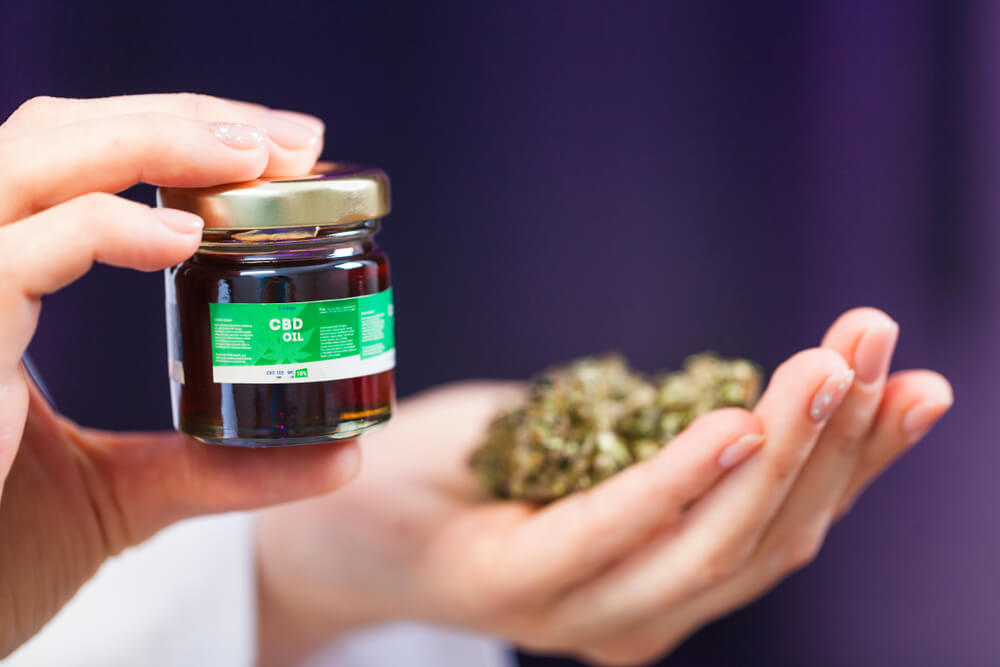
by Anne Davis, Bennabis Health
The use of medical cannabis in chronic conditions is well-known, and some estimates are that medical cannabis can be an adjunct to more than 100 medical conditions. Frequently mentioned conditions include neuropathic disorders such as multiple sclerosis, neuropathy, PTSD, anxiety and depression and certain epilepsies among young children.
Although cannabis is still federally illegal, multiple studies of patients with multiple sclerosis and their providers have acknowledged that cannabis may have a role in improving symptom control, particularly pain, muscle spasticity, and more.
Anne Davis is a successful attorney, mother and community leader in New Jersey. In 2007, she focused her practice on the legal, regulatory, and advocacy issues surrounding use of medical cannabis. In this role, she became a national figure, presenting at conferences, and a sought-after contributor to health care law and advocacy initiatives.
Fast forward to 2013: Anne was thriving in her career and caring for her 2 daughters, ages 8 and 19-a critical time for her young family, whose needs were typical of busy and actively involved children and parents. In 2013, Anne was diagnosed with relapsing-remitting MS.
Devastated by the diagnosis, Anne began to research the impact of the medical regimen, prescribed medications and ongoing testing and lab work that would be required. Anne would need frequent lab tests to ensure treatment was not harming her vital organs, a potential side effect of many medications used in treating MS.
After careful consideration, Anne decided to use her professional knowledge about medical cannabis for herself, a decision not supported by her neurologist and care team.
Much like Anne, studies indicate that most patients conduct their own research when considering medical cannabis. The advice from friends and family are the most frequently cited resources when considering cannabis. A 2014 study indicated that only 18% of patients discussed use of cannabis with their healthcare provider, and less than 1% received assistance from their healthcare team on the kinds of formulations available. This leaves patients in a precarious and potentially harmful situation. Patients rely on and trust their healthcare team.
Surprisingly, despite lack of support and collaboration with their healthcare team, a survey of MS patients conducted in 2019 showed that more than 40% of patients said they used medical cannabis in the past 3 months. This is a striking number, indicating that patients are seeking non-traditional resources in managing their care. These data beg the question: Why are MS patients trying medical cannabis? Are their current prescriptive medicines not working? Do they have ongoing and unresolved symptoms that interfere with their quality of life? What is motivating patients to pay out of pocket costs for medical cannabis on top of their co-pays and health insurance premiums?
For Anne, the answer was “to avoid potential side effects” of her prescription medicines.
“I knew from my years in the industry cannabis was effective and had zero side effects. I was well aware of the research that indicates that cannabis has neuroprotective qualities, in addition to symptom relief. For that reason, I decided to use it every day as part of my treatment plan.
As an MS patient, cannabis is an integral part of my daily life. I use it every night before bed to help with fatigue, muscle cramping and spasticity. It also significantly helps elevate my mood, especially on days when I feel a sense of overwhelm. For me, I struggle with cognitive issues the most from MS. It depends on where the lesions occur in your body, or specific regions of the brain that determines what is impacted the most. It is important to live a healthy lifestyle. For me, that consists of exercise, nutrition, avoiding saturated fats, sugars, beef and dairy. I have reduced stress in my life, get enough sleep, meditate and stay positive. Add cannabis, and I feel like I am doing everything in my power to live my best life.”
Anne is often asked what strains work best? The fact is, there is not one in particular. “I prefer to change strains often. It seems that you build up a tolerance when you use the same strain every day. The therapeutic benefits are best from a blend of strains. I prefer high THC as my use is primarily in the evenings. The level of relaxation that I can experience helps me to fall asleep, stay asleep and get a good night’s rest. I have heard of pharmaceutical companies getting in the cannabis industry and making the argument that cannabis should be mass-produced and you should have the same consistent THC and CBD levels with every plant. Nothing can be further from accurate. Patients need and want variations.”
“First, celebrate and recognize your work, no matter if it is behind the counter, in the boardroom, growing, cultivating, and supporting advocacy that directly benefits patients like me. No matter your role in this industry, behind at the end of the supply chain is a patient seeking resolve from one or more symptoms. It could be the nausea associated with cancer, the pain from glaucoma, the night terrors from PTSD.”
“Continue to grow and produce quality products. What is a quality product in the opinion of a patient? In my experience, it consists of large green or purple buds with aromatic terpenes. I strongly believe in the “entourage effect “so I like both high THC and CBD combined, another reason that I prefer to mix cultivars and create blends.”
The industry can also advance healthcare and consumer knowledge about cannabis in all its forms. Although peer reviewed articles and scientific evidence are less available than we would like, helping patients and their providers understand what and how to use medical cannabis is essential to its acceptance as an alternative treatment option.
Anne continues to successfully use medical cannabis today. Anne’s neurologist, who was originally against her decision, has since advised her that she made the right choice.
 Anne M. Davis, Esq. has been practicing law for 20 years. For the past 12 years, she has been recognized as one of the state’s leading experts in marijuana law and policy. In that role, Davis has presented workshops and seminars nationally about marijuana law reform. Since her diagnosis with MS, she has dedicated her skills and experience to create programs and expand access for medical marijuana patients. As part of that mission, she is a Patient Advocate for Bennabis Health, the first health care plan in the nation covering medical marijuana.
Anne M. Davis, Esq. has been practicing law for 20 years. For the past 12 years, she has been recognized as one of the state’s leading experts in marijuana law and policy. In that role, Davis has presented workshops and seminars nationally about marijuana law reform. Since her diagnosis with MS, she has dedicated her skills and experience to create programs and expand access for medical marijuana patients. As part of that mission, she is a Patient Advocate for Bennabis Health, the first health care plan in the nation covering medical marijuana.
As a community leader, Anne serves as a CASA (Court Appointed Special Advocate) working with foster children; she teaches CCD at her local Church, and has served as a Girl Scout leader for 11 years. Anne was recognized as a “Woman of Distinction” by the Girl Scouts at their annual Gala in 2020. Working with children, keeping them safe and giving them the best opportunities possible are some of her top priorities.
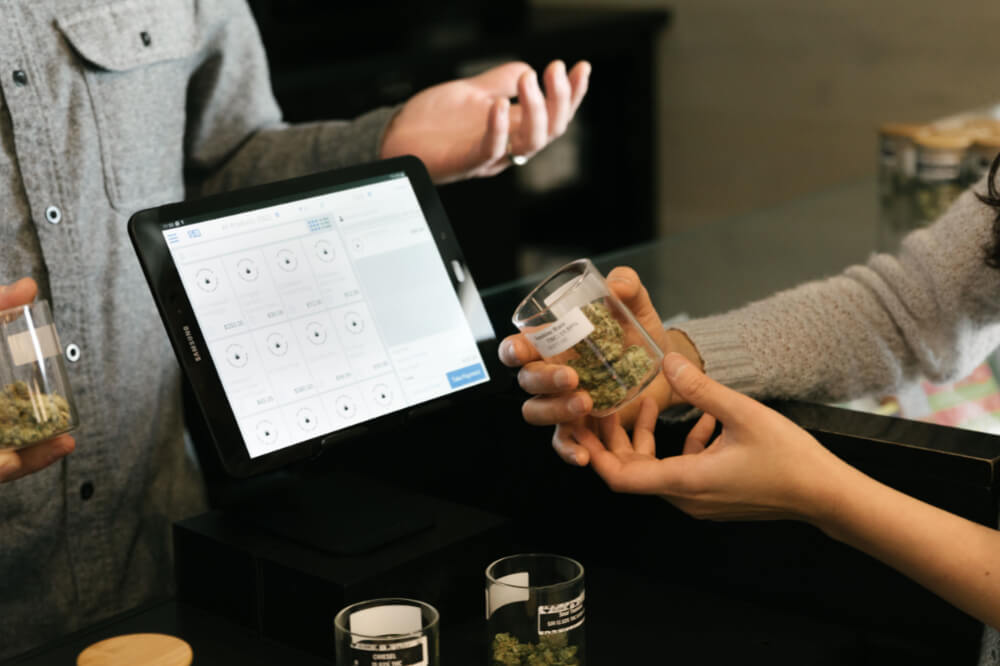
by Gary Cohen, Cova Software
The Canadian cannabis industry has witnessed great success since federal legalization in 2018. In the United States, 35 states authorize the use of medical cannabis, and 15 of them allow recreational marijuana consumption. Potential dispensary owners should bear in mind that the cannabis industry operates under strict laws and regulations that set this business apart from conventional retail operations. A robust point-of-sale (POS) system is one of the most important tools that a dispensary owner must invest in. However, it’s also crucial to remember that not all POS systems are created equal, and a cannabis industry-specific POS will always be a better choice than a generic POS. Following are some of the most important criteria that you should consider when selecting a cannabis POS:
A cannabis-specific POS created specifically to address the nuances and pain points of cannabis businesses is your best bet. A well-designed system helps you quickly process actual sales and facilitate better inventory management. An intuitive and easy-to-use system boosts the performance of your budtenders by making product information and customer data available to them on the fly, thus elevating the overall customer experience as well.
Compliance is the number one administrative burden dispensaries have to deal with because of the stringent laws and scrutiny the cannabis industry has to undergo. A well-executed cannabis-specific POS system empowers owners to stay compliant at every stage of their business. Most states in the US require tracking of inventory and sales through a state-mandated traceability system such as Metrc or BioTrack. Even among cannabis POS systems, the level of integration with the government tracking system varies, with many offering only batch reporting at the end of the day. Choose a POS that automatically sends every reported transaction in real-time to the tracking system, thus helping you minimize human errors and always stay fully compliant. Many legal cannabis markets also require digital age verification scanners for dispensaries to scan IDs at the point of entry. So ensure that your POS provider provides all these functionalities.
There have been instances of generic POS crashing when used by cannabis stores. Even popular cannabis-specific POS systems have had recurring performance issues. Learn more about each of the POS systems in consideration by reading reviews and customer stories to figure out how reliable they are. A cloud-based POS system entails storing data on remote servers operated and maintained by a third party. It poses a lower technical barrier to entry and is definitely a cost-effective solution, but you must ensure that your POS provider protects all your dispensary and customer data, as per government regulations.
A well-designed POS system offers inventory valuation and costing methods integrated into your POS to streamline your inventory management. A dispensary-specific POS will provide you the sales trends data you need to most accurately judge the weights, strains, and quantity of products you need to stock up. Many states in the U.S. expect you to have a clear paper trail on every legally grown gram of cannabis, from seed to sale, and your POS system must have efficient reporting capabilities for you to report that. Powerful analytics and a customizable mobile reporting dashboard will enable you to monitor the health of your store and submit reports in real-time from anywhere.
How your dispensary POS integrates with your other services and technology is another factor. Consider all the physical hardware that is being used in various sections of your dispensary and whether the POS provider can sync them with its software. You will have to integrate your accounting, HR, workforce, and security software solutions with your POS as well to ensure smooth operations. In a fast-evolving industry, new platforms and innovative solutions can hit the market almost overnight, but you must only select a POS that seamlessly integrates just not with your hardware and software but also with online marketplaces like Leafly, Weedmaps, and Dutchie so that you can offer easy pickup and delivery services to your customers as well.
A cannabis-specific POS company that has extensive experience in the industry will remain an authority on the latest developments, and will regularly update its product to stay ahead of regulatory changes. Find out about the after-sales customer support system they have in place- many companies will help you launch quickly but will disappear when problems may arise and leave you to tackle software glitches on your own. Also, choose a dedicated system for your retail business that specializes in the cannabis sector you operate in and is not an all-in-one solution.
An enterprise-level POS allows you to manage stock across all stores, set up location-level pricing, perform bulk editing, and even assign granular employee security permissions. It gives you complete visibility and full corporate control of your business with centralized reporting- accessible from anywhere, on any device. A POS built for multi-location brands has a robust platform with open APIs to enable flexible, plug-and-play integrations for easy scalability. Choose a POS provider that has the cannabis industry expertise and the ability to grow with you. Even if you may have to pay a bit more upfront, you will benefit from the long-term ROI and reduce your overall cost of ownership.
This is not an exhaustive list of points to consider. Download your free copy of ‘10 things to consider when choosing a point of sale system for your cannabis dispensary’ guide by Cova Software, which will offer you comprehensive information and help you choose the right POS.
Gary Cohen is the CEO of Cova Software, the fastest growing technology brand in the cannabis industry. Cohen’s focus has been driving the company’s overall strategy, including its vision, go-to-market plan, and strategic development. Since joining the cannabis industry in 2016 and launching Cova commercially in 4q17, Cohen has led Cova to dominate the enterprise sector for dispensary Point of Sale, while forging client relationships with hundreds of single-store retailers across North America.
Cova designs and builds retail software solutions specifically for the cannabis industry. Our technology platform currently powers 20,000 retail stores and over 1000 cannabis dispensaries with virtually no downtime, even on 4/20, making us the most robust and reliable cannabis POS system available on the market. Our point of sale system and its suite of digital solutions make complex operations simple, so retailers can stay compliant, streamline their operations and deliver an amazing experience always.

NCIA Deputy Director of Communications Bethany Moore checks in with what’s going on across the country with the National Cannabis Industry Association’s membership, board, allies, and staff. Join us every Friday on Facebook for NCIA Today Live.

By Matt Finkelstein, BlueFire Cannabis by FutureSense
We are pleased to announce the release of the 2021 Cannabis Compensation Survey Report. This second annual survey aggregates compensation data for cannabis businesses and ancillary services, establishing benchmarks to help those businesses better understand the market and stay competitive, all while following federal compliance regulations that guide the collection and dissemination of compensation survey data and results.
FutureSense and NCIA laid the foundation for the project in 2019 and released results for the inaugural survey at the end of that year. At the onset of the pandemic in early 2020, both parties took a step back to adjust their trajectories looking to enhance the scope and depth of the project. Marijuana Business Daily came on as a primary partner to assist with visibility and distribution. Green Leaf Payroll & Business Solutions came on as a supporting partner, providing the project with anonymized payroll data. NCIA has stayed on as an endorsing partner to promote the shared mutual interest of supporting cannabis businesses and the industry at large.
This year, the survey established benchmarks with reportable data for 98 unique positions, a jump up from the inaugural report, which included 78 positions. The benchmarking process also established more accurate job titles representing both specific job responsibilities as well as representing the scope and breadth of organizational structures within the cannabis industry. These benchmarks include close to 200 unique positions total that will be reported on as the project grows and more cannabis organizations participate and submit data in future years.
The final report also includes recent trends and observations connecting the data to anecdotal insights found through our work and involvement in the cannabis community. The final report also provides information about how to utilize the survey data and a “geo-differential” chart to inform making any adjustments by state. The results are presented as percentiles to show both central tendency and spread. They are meant to be used as ‘guideposts’ to help inform salary and wage decisions, rather than exact numbers to base those decisions on. Many factors can and should be taken into consideration when determining what and how to pay employees, but these results provide an accurate representation of what pay amounts can be.
As the survey evolves and more companies participate, the project plans to also produce results with demographic breakouts such as by region/location, industry sector, and company size; as well as data for benefits, incentives, and equity compensation. These are all very valuable insights but require more participation across the country to produce, per compliance regulations.
The results from the survey can be used across every facet of the cannabis business. Understanding not just how to pay your employees, but also how to attract, motivate, engage, and retain your employees through compensation can be make-or-break in this rapidly evolving industry. 60-70% of companies’ expenses are typically payroll; being even 5% on- or off-the-mark could mean thousands or hundreds of thousands of dollars lost or gained.
The survey’s success is contingent on participation. More and more companies are realizing the value of this information and the importance of transparency through 3rd party surveys. All submissions and their respective data are held in strict confidentiality. Abiding by the Department of Justice regulations, this survey produces anonymous and unbiased results.
The survey accepts organization-wide submissions for companies with ten or more employees at this time. Individual submissions are appreciated as anecdotal insights, but are typically not included in data calculation.
For more information and to download your copy of the survey, please visit: https://content.futuresense.com/2021cannabiscompensationreport
For any questions and/or to sign up for next years’ survey, please email matt@futuresense.com or visit: www.BlueFireCannabis.com
 Matt Finkelstein is a consultant with BlueFire Cannabis by FutureSense. He has worked in the management consulting world since 2007 while also pursuing a passion for and career in organic farming. His farming experiences span across the many facets of the cannabis industry, lending itself to unique perspectives supporting his current work bringing FutureSense’s services to the cannabis industry and its community.
Matt Finkelstein is a consultant with BlueFire Cannabis by FutureSense. He has worked in the management consulting world since 2007 while also pursuing a passion for and career in organic farming. His farming experiences span across the many facets of the cannabis industry, lending itself to unique perspectives supporting his current work bringing FutureSense’s services to the cannabis industry and its community.
BlueFire Cannabis is the cannabis-forward division of FutureSense LLC, a management consulting firm providing holistic people strategies that improve business performance. Our specialties include business strategy, motivation and rewards, executive, employee and sales compensation, organizational and individual assessment, leadership development and coaching, human resources, communications, change and sustainable transformation. For more information, please visit www.BlueFireCannabis.com and www.FutureSense.com

by NCIA Staff and members of NCIA’s Diversity, Equity, and Inclusion Committee
As the nation continues to struggle with the ongoing deaths of people of color at the hands of law enforcement, including recently those of 20-year-old Daunte Wright and 13-year-old Adam Toledo, we are relieved to see that George Floyd – whose killing by police officer Derek Chauvin last year sparked a global reckoning on institutional racism and the urgent need for criminal justice reform – will receive some form of justice with his murderer being held accountable in a court of law.
The fact that the Chauvin defense largely hinged on the presence of drugs in George Floyd’s system at the time of his murder should come as no surprise. Since its inception, prohibition and the accompanying dehumanization of people who use drugs have been used to justify unfairly robbing people of color of life, liberty, and property, with devastating generational effects. This bloody cycle must end.
While many of these deaths are not directly related to cannabis, they take place in the house of horrors that prohibition helped build, and it is our duty to dismantle the walls nearest us through substantive policy reform. Despite yesterday’s guilty verdict in the Chauvin trial, examples of justice like this are still far too rare and do little to ease the pain of those most affected. We acknowledge that there is still much work to do to right the wrongs of the past and ensure they do not continue into the future.
NCIA reaffirms its commitment to helping repair the racially and economically disparate harms caused by prohibition by removing criminal penalties for cannabis-related behavior and promoting a diverse and inclusive cannabis industry. We stand in solidarity with all those fighting against police violence and systemic racism.
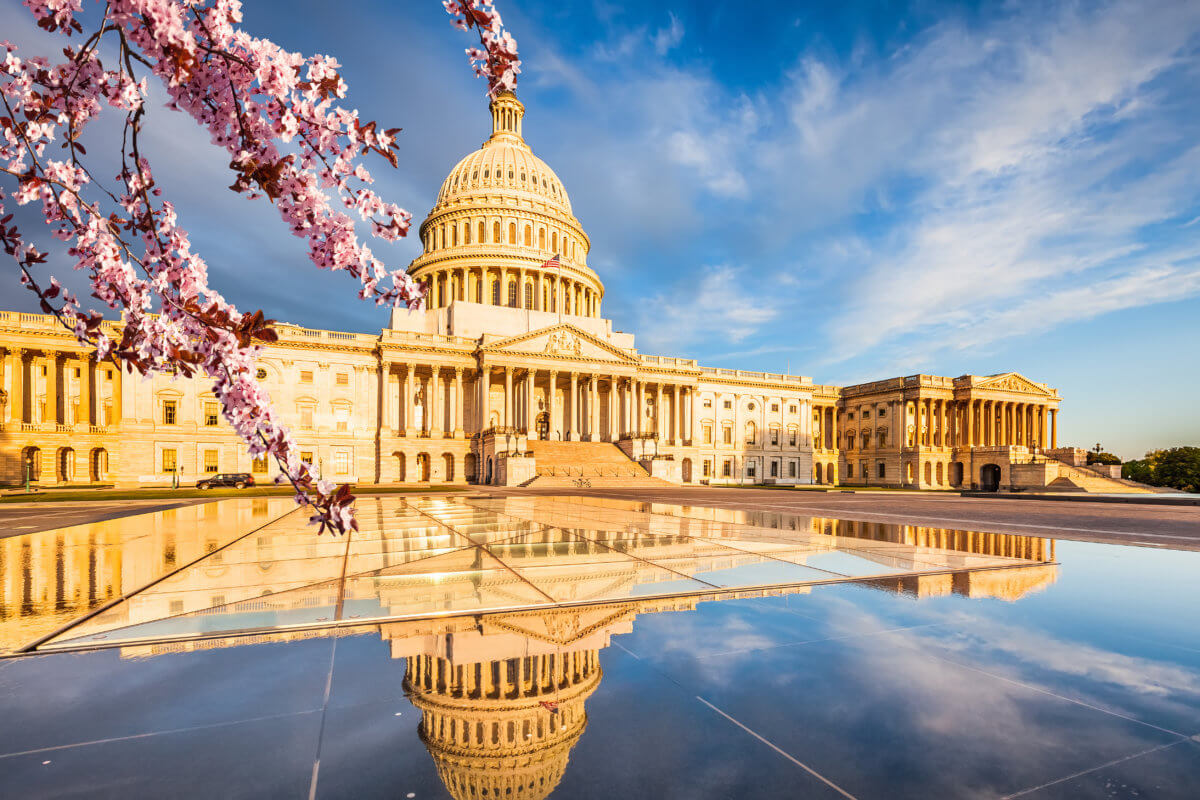
 by Madeline Grant, NCIA’s Government Relations Manager
by Madeline Grant, NCIA’s Government Relations Manager
The Secure and Fair Enforcement (SAFE) Act, or H.R. 1996, passed the U.S House of Representatives with a final recorded vote of 321-101. This is the first floor action on a cannabis reform bill this Congress. This is not the first time we’ve seen movement on this bipartisan piece of legislation that would protect banks that service state-legal marijuana businesses from being penalized by federal regulators. The bill was reintroduced in March by Reps. Ed Perlmutter (D-CO), Steve Stivers (R-OH), Nydia Velazquez (D-NY), and Warren Davidson (R-OH), and had 177 total cosponsors by the time of the vote. The bill was taken up under a process known as suspension of the rules, which requires a 2/3rd supermajority to pass and does not allow for amendments. This is the fourth time that the House has approved the language of the SAFE Banking Act, initially as the first standalone cannabis policy reform bill ever passed by either chamber of Congress in 2019 and two more times last year as part of pandemic relief packages that were not approved in the Senate.
The SAFE Banking Act would protect financial institutions from federal prosecution for providing banking and other services to cannabis businesses that are in compliance with state law, as well as help address serious public health and safety concerns caused by operating in predominantly cash-only environments. The legislation would improve the operational viability of small businesses by helping them reduce costs associated with lack of access to banking and increasing options for traditional lending that many small businesses in other fields rely upon. It would also mandate a study on diversity in the cannabis industry.The SAFE Banking Act seeks to harmonize federal and state law by prohibiting federal banking regulators from: threatening or limited a depository institutions access to the Deposit Insurance Fund, discouraging, prohibiting, or penalizing depository institutions from dealing with the cannabis industry, taking any action against a loan made to a covered business and forcing a depository institution to halt providing any kind of banking services.
Legislation to provide safe harbor for financial institutions that choose to service the cannabis industry was first introduced in 2013 and was called the “Marijuana Businesses Access to Banking Act.” When the bill died in Congress, it had 32 cosponsors and no Senate companion legislation. The bill was reintroduced in 2015 with the same name and 39 cosponsors and a Senate companion with 11 cosponsors.
In 2017, the bill was reintroduced and renamed the Secure and Fair Enforcement (SAFE) Banking Act. By the end of that session, the bill had 95 cosponsors and the Senate companion bill had 20 cosponsors.
On March 7, SAFE Banking was introduced in the House by Rep. Ed Perlmutter (D-CO) and was referred to the Judiciary and Financial Services Committees. On March 28, 2019, the Financial Services Committee voted 45 to 15 to advance the bill to the full House. The bill had broad bipartisan support with 153 cosponsors, over a third of the entire House, at the time of the committee vote (a major jump from 2017). On April 1, Senator Jeff Merkley (D-OR) introduced a companion bill to the Senate and the bill was referred to the Senate Banking, Housing, and Urban Affairs Committee. On June 6, the House bill moved out of committee and was placed on the Union calendar for a vote. The bill then passed the House by 321-103.
Congress spent 2020 legislating relief legislation for Americans as the coronavirus took a toll across our nation. SAFE Banking language was also included in two coronavirus relief packages that the House approved, but unfortunately, did not make it through the Senate.
One thing is abundantly clear, states are continuing to legalize cannabis and the federal government must mitigate the state and federal conflict that legal cannabis businesses are facing. Access to banking is not only essential for any business to function, but a necessary measure for public safety. Laws making cannabis legal for adults have been passed in 18 states as well as the District of Columbia and the territories of CNMI and Guam, and 36 states, as well as several territories, have comprehensive medical cannabis laws. As the House of Representatives, again, has passed SAFE Banking, we will turn our focus to the Senate and keep up the momentum. Make sure when you have a few minutes call your senators and urge them to support the SAFE Banking Act, S. 910. You can look up your senators’ information HERE.
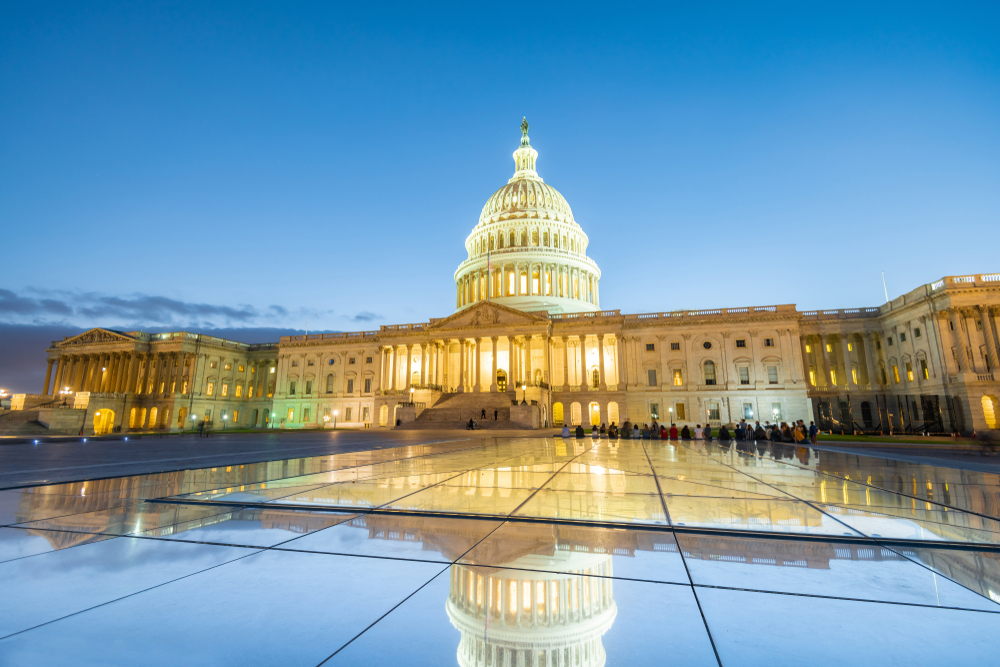
The House of Representatives approved legislation again today that would provide safe harbor for financial service providers to work with cannabis businesses that are in compliance with state laws. The Secure and Fair Enforcement (SAFE) Banking Act, or H.R. 1996, was reintroduced in March by Reps. Ed Perlmutter (D-CO), Steve Stivers (R-OH), Nydia Velazquez (D-NY), and Warren Davidson (R-OH), and had 177 total cosponsors by the time of the vote. The legislation was approved by a vote of 321-101, including a majority of voting Republicans.
This is the fourth time that the House has approved the language of the SAFE Banking Act, initially as the first standalone cannabis policy reform bill ever passed by either chamber of Congress in 2019 and two more times last year as part of pandemic relief packages that were not approved in the Senate.
“We are incredibly grateful to the bill sponsors who have been working with us for the last eight years to make this sensible legislation become law and have shepherded it through the House time and again,” said Aaron Smith, co-founder and chief executive officer of the National Cannabis Industry Association. “The SAFE Banking Act is vital for improving public safety and transparency and will improve the lives of the more than 300,000 people who work in the state-legal cannabis industry. It will also help level the playing field for small businesses and communities with limited access to capital. It is time for the Senate to start considering the companion legislation without delay.”
Advocates are hopeful that Senate Banking Committee Chair Sherrod Brown (D-OH) will take up the bill in the near future so that it can begin to move through the upper chamber as soon as possible and become law before the end of the year.
The SAFE Banking Act would protect financial institutions from federal prosecution for providing banking and other services to cannabis businesses that are in compliance with state law, as well as help address serious public health and safety concerns caused by operating in predominantly cash-only environments. The legislation would improve the operational viability of small businesses by helping them reduce costs associated with lack of access to banking and increasing options for traditional lending that many small businesses in other fields rely upon. It would also mandate a study on diversity in the cannabis industry.
Laws making cannabis legal for adults have been passed in 18 states as well as the District of Columbia and the territories of CNMI and Guam, and 36 states as well as several territories have comprehensive medical cannabis laws. The substance is legal in some form in 47 states.
###

 by Deborah Johnson, MCA Accounting Solutions & James Whatmore, MAB Investments
by Deborah Johnson, MCA Accounting Solutions & James Whatmore, MAB Investments
NCIA’s Banking & Financial Services Committee
Part 2 of a 3-part series
In our first part of this blog, we discussed the very beginnings of a company; an idea, gathering a team around you, self-funding, opening a bank account and forming an LLC or incorporating. Now you are ready to take a big step, bring on some more people, purchase more equipment and explore partnerships. You have a path with real milestones. This is the time to plan a funding strategy.
If you are not plant-touching, or you are directly ancillary, you might be able to secure a bank loan or an SBA loan. As the SAFE Banking Act is being considered in Congress (at time of writing) the reality of greater access to cannabis banking services may be getting brighter. However, traditional banking sources may still be an issue. These challenges have blended into some ancillary activities. There are a few other debt instruments including venture debt, an accounts receivable (AR) line, or an asset loan. Some of these instruments can be originated with specialty firms or other investment sources.
“While debt has traditionally been scarce in our industry, the relatively recent arrival of lenders has fortunately changed the construct of cannabis company balance sheets. Industry normalization, low rates, relatively high equity capital costs and supply-demand imbalances have attracted capital pools into credit and provided companies with the ability to further normalize their blended cost of capital,” said Sumit Mehta, founder and CEO of Mazakali and chairperson of NCIA’s Banking & Financial Services Committee.
Recently Harborside Inc. (CSE:HBOR) (OTCQX:HBORF) in California landed a historic $12 million revolving line of credit with a bank, marking the first time a cannabis touching company has secured this kind of access. Granted it is secured, but it is a commercial loan from a traditional lender. If you have real estate involved many investors will do a sale leaseback on the property to provide some liquidity. Equipment may also secure a loan; this is often a choice to outfit a capital-intensive production. When evaluating your debt options consider what is happening at this point in your life cycle. For an early-stage company, a revolver may not be the right fit; however, having the right equipment getting you to revenues might be worth investigating.
There are also grants available. Especially with COVID-19, many local jurisdictions are providing small business grants, or you might find one aligned with your demographic or target market niche. Many startups find an accelerator or incubator to help both fund and scale the company. In cannabis, the accelerators have historically been targeted to the ancillary market. Several exist, including Canopy Boulder, Momentum, Gateway, Hood Incubator, The Initiative, Cannabiziac, and even traditional market accelerators such as Y Combinator are addressing the needs of the cannabis market. Accelerators will invest in the companies they are providing guidance to and are generally hosted over a short period of time like 3-4 months, whereas an incubator provides resources, networks, and services over an 18+ month time and might charge a fee to participate. This early mentoring is a great resource for social and personal capital as well. If you have participated in an accelerator or incubator environment you should be exposed to early-stage investors; if you haven’t been exposed to them, this is the time for a solid PowerPoint deck and to polish your presentation.
Next on the list are angel investors. Angels are those individual investors that provide early-stage funding for a startup usually in exchange for convertible debt or ownership equity but are not locked into a funding structure. Banks make loans, angels can do as they please. They can be sophisticated or unsophisticated as they technically just need to qualify as an accredited investor. Most are drawn to investing in something familiar, so either they have a direct professional background in your industry or have felt the pain point you are addressing personally. Some want to roll up their sleeves and be engaged in helping your company grow, others just want to diversify their investment portfolio and take a more passive role. They can invest in the idea and direction of the company and a good angel will understand the timing of the investment. This means that early-stage investors like angels and funds should understand that this is a long-term investment that might take 5-8 years to see liquidity.
The greatest challenge to an entrepreneur is where to find them. Sometimes it’s as easy as looking around your network. With some work you can attract attention to your business idea by either presenting/speaking or pitching at a conference. Over the years, many opportunities to do so have developed. NCIA hosts CannaVest and Cannabis Business Summit, one of the longest running is The Arcview Group, Benzinga, IC3 by IMN, CWCBExpo and many cut their teeth at MJ Biz. Angels are individuals, but often belong to a group of angels to assist with deal sourcing and due diligence. With the normalization of cannabis, you can find many groups via the Angel Capital Association. We’d suggest reviewing market transactions and see who is announcing that they secured funds and with whom. You can find this information through keywords and press releases, consolidating sites such as New Cannabis Ventures or Viridian Capital Advisors, or even Pitchbook. This is the hard part of fundraising: connecting with the right investors.
You can also gain exposure to investors by sharing your expertise. Whether it’s articles on LinkedIn or podcasts and panels, exposing your knowledge of your niche is critical to gaining their confidence in your ability to execute. The conferences above may host your presentation as well furthering your investor engagement. One word of caution, there is a new platform being used by millions – even though it’s still in beta – called Clubhouse. There have been many people that are running pitch rooms on that platform and they are running up against the SEC and rules for fundraising. We encourage an extra dose of caution when pitching where you don’t understand who your audience is and if they adhere to qualifying factors. Many times, the later investors (Series B or C rounds) have to do a lot of work to clean up the cap table from earlier investment rounds. That can be a hurdle that an investor might walk away from. So, the more you can do to assure you are running a clean and efficient fundraising round, the better.
Given that we are in the cannabis industry, it is of particular importance to be an advocate. Access to this plant is still restricted for many, people are still going to jail or are still in jail, and businesses have a disadvantage to all other industries given the repercussions of federal illegality. So being an advocate, aligning and engaging with advocates like the National Cannabis Industry Association (NCIA), Marijuana Policy Project (MPP), Students for Sensible Drug Policy (SSDP) and others, can also expose you to investors who recognize your understanding that there is much work to be done to assure fair access. Expertise, Advocacy, and Engagement will build your social capital. The early rounds can hinge on these factors. While you will need a proforma, other financials and a solid plan, an angel is investing in you as much as in your current project. With enough social capital, your relationship with the early angel investor will survive major setbacks.
Once past these early rounds, your focus will turn to more formal investment groups and businesses in private equity, venture capital and then the public market. Currently those companies touching the plant are able to be hosted on the OTC (over-the-counter) market or the CSE (Canadian Stock Exchange) with a growing number of ancillary companies listing on the traditional exchanges. Here there will be a deep dive into the numbers and execution, pre/post revenues with a clear runway to real revenue. This requires an adaptive corporate culture with some loss of control expected.
In our final piece of the series, we will review crowdfunding, tips on angel and fund investors, and types of funding.

NCIA Deputy Director of Communications Bethany Moore checks in with what’s going on across the country with the National Cannabis Industry Association’s membership, board, allies, and staff. Join us every Friday on Facebook for NCIA Today Live.

 by Rachel Kurtz-McAlaine, NCIA’s Deputy Director of Public Policy
by Rachel Kurtz-McAlaine, NCIA’s Deputy Director of Public Policy
Like many of you, NCIA needed to pare down during the pandemic. This has been hard on everyone and we understand first hand the sacrifices. Thankfully cannabis was deemed essential throughout much of the country, which isn’t a surprise to any of us in the industry. But we know that our members still needed to adjust their operations and spend a lot of money trying to stay safe and in operation. Like you, we also needed to adjust.
During this time we weren’t able to oversee our Allied Associations Program, although we maintained our relationships and were able to include many of our Allied Associations and their valuable insight in our webinars. As the number of vaccinations continues to rise and things start opening up, we can’t help but feel hopeful in the future — not to mention a Senate Majority Leader committed to legalization. We want to thank everyone for their patience and announce that we are picking up where we left off on the Allied Associations Program.
What is the Allied Associations Program?
The Allied Associations Program is a network of cannabis trade associations from the local, state, national, and international level designed to harness our collective knowledge and work together to advance the cannabis industry. As the leading national cannabis industry trade association, we felt an obligation to the community to make sure cannabis businesses have strong trade associations to educate and represent them in every way, so we started this complimentary program for other cannabis trade associations.
While the focus of our lobbying efforts is at the federal level, we know what a huge impact state and local policies have on the day-to-day operations of our members. The Allied Associations Program allows us to keep updated about these important issues so we remain a valued resource. It also allows us to keep other associations informed on federal issues and utilize this extensive national network for important federal policy action items.
We encourage our members to learn more about the Allied Associations Program and check out the directory of participating associations. Being part of the Allied Associations Program means the association is providing educational opportunities for their staff and leadership, and networking with other cannabis trade associations from around the country, ensuring they are adding value for their members.
What does this mean for cannabis trade associations?
Current Allied Associations need to check their email for information on the next Allied Associations Program monthly call, and updating any information that has changed via the NCIA member portal. In addition to the return of monthly calls, Allied Associations should be aware of NCIA’s upcoming conferences: our Midwest Cannabis Business Conference in Detroit in September, and the Cannabis Business Summit in San Francisco in December. Allied Associations are visible at our events and important to the planning process.
Cannabis trade associations who would like to learn more about joining should check out our Allied Associations Program page and click on “learn more about the AAP” to get in touch with Rachel Kurtz-McAlaine, our Deputy Director of Public Policy who also manages the program.

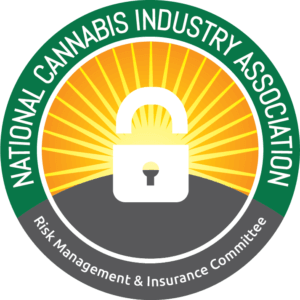 by Carol Welch & Jim Gerencser
by Carol Welch & Jim Gerencser
NCIA’s Risk Management & Insurance Committee
Cannabis was legalized for medical use in California in 1996. Since then, 47 states, the District of Columbia, and three territories (Puerto Rico, Guam, and CNMI) have legalized some form of cannabis, leaving only three states with no legal use. Thirty-six states have an effective medical use law in place. The main reason insurance companies haven’t had to consider providing coverage for patients is because federally cannabis is still listed as a Schedule 1 drug. Even though the likelihood of cannabis being legalized nationally seems bound to happen within the next few years, insurance companies should start planning to incorporate new cannabis policies into their plans now.
Here are five great reasons to cover medical cannabis:
SAVES MONEY
Science has proven that cannabis helps over 60% of epilepsy patients decrease the frequency and severity of seizures. Cannabis products should cost less than traditional epilepsy medications, especially when taking into account the added prescriptions often needed to combat the side effects of currently available prescription drugs.
Compared to the traditional cost of cancer treatment, patients opting to skip conventional treatments for cannabis could save their insurance companies thousands in initial cancer treatment, and potentially will have less recurrence and costly maintenance prescriptions.
Insurance companies are paying billions in healthcare costs to include doctor visits, lab tests, hospital admissions and prescriptions for conditions that cannabis has shown to improve dramatically. Chronic pain, depression and PTSD are all treatable with cannabis, and cannabis is much less dangerous than the opioids that are commonly prescribed in chronic pain cases.
SAVES LIVES
There are no known deaths reported from cannabis consumption alone. According to the CDC, there were 70,630 deaths due to drug overdose in 2019. In addition, there are estimates of over 1.5 million hospitalizations per year from adverse drug reactions that don’t cause death but are still costly to many people. Insurance companies can avoid some of the negative PR, potential litigation and upset related to deaths caused by pharmaceuticals, while providing patients with a solution that works for many conditions.
Research is increasingly showing that certain strains and compounds within the cannabis plant can have a significant positive effect on several conditions. For instance, breast cancer responds very well to FECO (full extract cannabis oil), with lab tests showing how cannabis causes cancer cell death. More study is still needed, and that is currently being conducted in Israel where there are fewer legal barriers to research.
REDUCES MEDICARE SPENDING
Data from all prescriptions filled by Medicare Part D enrollees from 2010-2013 showed a significant decrease in prescriptions being filled for symptoms for which cannabis could serve as an alternative treatment. Overall reduction in Medicare spending in states that implemented medical marijuana laws were estimated to be $165.2 million per year (2013). This one difference alone could mean billions in savings for insurance companies in the coming years.
IMPROVES SATISFACTION RATINGS
Let’s face it, insurance is a competitive business. Several large health insurers cover most of the country and will likely be the last to jump on board to cover medical cannabis. But for the smaller, regional or state-specific insurers out there, adding cannabis to the coverage lineup in legal states can provide a competitive advantage with employers and group plans.
Medical cannabis is listed as an eligible expense in many Canadian companies’ HSAs and is listed as an eligible medical expense by the Canada Revenue Agency. Since our northern neighbors are starting to cover it, hopefully that will encourage U.S. insurers to do the same.
IT’S THE RIGHT THING TO DO
Cancer is the #2 leading cause of death in the United States and can cost several thousand dollars for treatment. Using cannabis as a complementary treatment to traditional cancer therapies could decrease the cost of treating cancer to the patient, to the insurance companies and in the end to all of the people across the United States that contribute to Medicare and Medicaid.
If you would like to take action, contact your legislators to push for the federal legalization of cannabis or sign this petition calling on all U.S. insurers to step up and cover medical marijuana for their patients. Here’s a link to the Care2 petition: Health Insurance Companies Should Cover Medical Marijuana Now.

by Scott Thomas, National Director of Signature Brands, Genetec
In the last few years, the cannabis industry has exploded. Recent changes in the U.S. administration could speed up the approval for medical and adult-use cannabis usage, leaving policymakers rushing to keep up with this fast-changing industry.
As more states legalize both medicinal and recreational usage, demand will increase and lead to new cultivation and retail operations. Some of these new businesses will expand and grow, while others will get acquired by larger organizations.
Whether you’re new to the market or already established, you know that security is important. Keep reading to learn how to go beyond securing your people and assets, while also maximizing your operational efficiency, protecting your data, managing compliance including audits, and more.
The cannabis industry is expanding fast. Growers, distributors, and retailers are all looking to build and extend their businesses into new markets and territories, which means physical security needs are constantly changing. Can your security system evolve with you?
A physical security platform that combines your IP security systems into one platform can give you true seed-to-sale visibility for all your products. It can combine required components like video monitoring, access control, and intrusion detection into a single, unified view of all on-site activity.
Cannabis laws and regulations are complicated and can put stress on cultivators and retailers.
Although governments are becoming more accepting of cannabis, complicated regulations will continue to dictate how your product is produced, distributed, and sold. It’s important to be proactive and not wait until laws are finalized before taking the necessary steps to avoid fines, product recalls, or the loss of your license.
A physical security solution should do more than protect your people and assets. It can also help you maintain compliance by integrating policy and regulations within its platform. Then you can easily create security and operational reports and manage evidence for internal and external audits.
When referring to technology, the simplest way to explain the difference between open architecture and proprietary systems is that some manufacturers design products that only work with their hardware or software. This locks the customer into their product, whether that product meets their future needs or not.
With an open architecture platform, your physical security solution can support hundreds of different camera models, access control systems, license plate readers, visual and audible devices, input and output devices (IO devices), Programmable Logic Controllers (PLC’s), and more. When you combine all of these devices into a single unified platform, you can gain access to a constantly growing ecosystem of hundreds of systems, sensors, and applications like:
Securely storing your data can be challenging. Retail and online dispensaries need to keep sensitive patient and customer information safe to maintain trust. And cultivators need to keep research, intellectual property, and financial information secure. While many states have basic protocols around data and video storage, new federal and state regulations are quickly evolving as concerns over data privacy increase.
That’s why it’s important to have a provider that’ll continue to work with you as laws change and the threat landscape evolves. Your physical security system can help keep your data safe from people within your organization that shouldn’t have access, as well as mitigate your exposure to outside threats such as cyber attacks.
Trying to cut corners while securing your business can result in unexpected complications and higher costs in the long run. Think long term and prioritize a unified physical security solution that provides more than basic security and is a core component of your business operations:
 Scott Thomas has worked in the retail industry for over 27 years. Prior to joining Genetec Scott was a National Account Manager at Checkpoint Systems where he worked with numerous loss prevention and physical security technologies. Scott is a member of multiple Retail organizations and an active participant in the retail community.
Scott Thomas has worked in the retail industry for over 27 years. Prior to joining Genetec Scott was a National Account Manager at Checkpoint Systems where he worked with numerous loss prevention and physical security technologies. Scott is a member of multiple Retail organizations and an active participant in the retail community.
Genetec Inc. is an innovative technology company with a broad solutions portfolio that encompasses security, intelligence, and operations. The company’s flagship product, Security Center, is an open-architecture platform that unifies IP-based video surveillance, access control, automatic license plate recognition (ALPR), communications, and analytics. Genetec also develops cloud-based solutions and services designed to improve security, and contribute new levels of operational intelligence for governments, enterprises, transport, and the communities in which we live. Founded in 1997, and headquartered in Montréal, Canada, Genetec serves its global customers via an extensive network of resellers, integrators, certified channel partners, and consultants in over 80 countries.

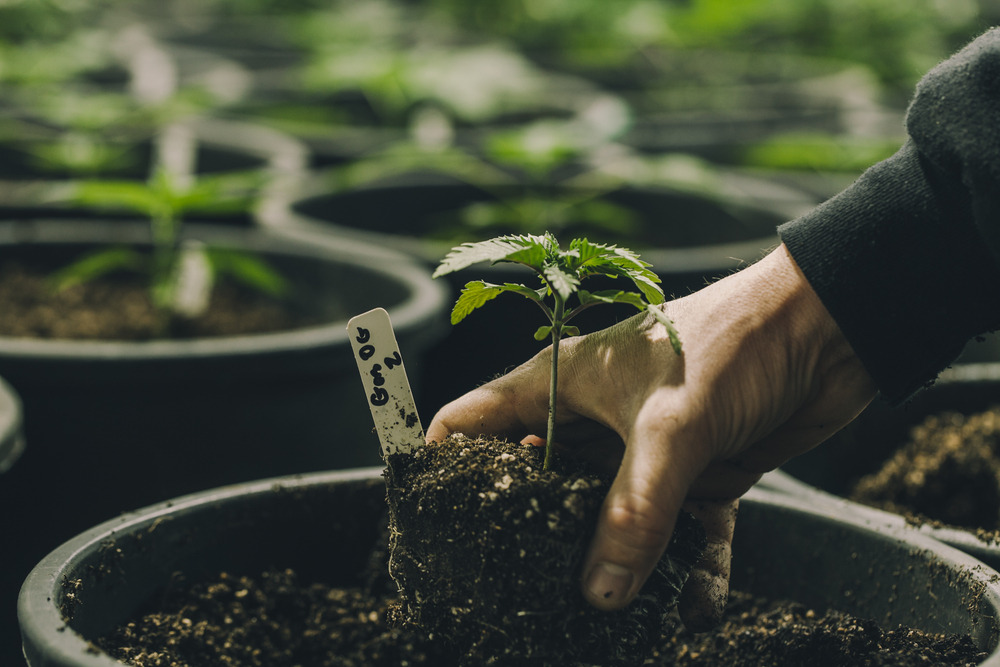
By Charles J. Messina, Esq., Jennifer Roselle, Esq. and Donald W. Clarke, Esq. of Genova Burns LLC
After several failed attempts, and seemingly the result of catching significant political heat as of late, Governor Cuomo is allowing the adult-use cannabis industry to blaze forward in New York.
With Gov. Cuomo’s signature, the bill (S.854-A), known as the “Marihuana Regulation and Taxation Act” (MRTA), establishes the legislative foundation upon which a regulatory infrastructure will be built to host a network of licensed operators to cultivate, process, distribute, sell, and host cannabis consumers. In addition to regulating adult use of cannabis, MRTA also amends the state’s existing medical use law (the New York Compassionate Care Act) and provides, among other things, rules for hemp, CBD, and other cannabis extracts.
First, adults may personally possess up to 3 ounces of plant cannabis (and 24 grams of “concentrated cannabis”) without being prosecuted or arrested. In addition to decriminalization, the law also expunges convictions based on conduct which is now authorized under MRTA.
Unlike New Jersey’s recently approved cannabis legislation, consumption of cannabis will be permitted in the same (or similar) places as vaping and cigarettes. Also, New Yorkers will be able to grow their own cannabis. Although “home grow” will be delayed for months until after more rules are promulgated and retail sales commence, a household will be able to grow a maximum of up to twelve plants (six mature, and six immature), with a five-pound possession limit for adults.
Throughout MRTA, there is a heavy focus on social and economic equity. This is integrated in the application process, apportionment of tax revenue, and adjustments made to the penal code. Certain applicants can qualify as a “social and economic equity applicant” to help the Office of Cannabis Management reach its goal of awarding 50% of licenses to minority or woman-owned business enterprises, distressed farmers, or service-disabled veterans.
Similar to New Jersey, the law’s terms will be supplemented by not-yet-created regulations. The regulatory framework will be created by a cannabis Advisory Board and carried out by the newly established Office of Cannabis Management (OCM). The OCM will be an independent office operating as part of the New York State Liquor Authority. It will have a five-member board, with three members appointed by the Governor and one appointed by each house.
Because much of the regulatory licensing framework does not yet exist, there is no established start date. Reports suggest sales could commence as early as December 2022. Home-growers for recreational use must wait no less than 18 months after the initial retail sales to plant their seeds. The tiered licensing structure prohibits those upstream in the production process from selling to the general public.
The available licenses include:
*Cultivator License—includes the agricultural production of cannabis and minimal processing and preparation.
*Processor License—includes blending, extracting, infusing, packaging, and preparing cannabis for sale. There is a limit of one license per processor, but each license can authorize multiple locations.
*Distributor License—authorizes the acquisition, possession, distribution, and sale of cannabis from a licensed cultivator or processor to retail dispensaries and on-site consumption sites.
*Retail Dispensary License—authorizes the sale of cannabis to consumers, with a limit of three retail dispensary licenses per person. A retail licensee may not also hold a Cultivator, Processor, Microbusiness, Cooperative, or Distributor License.
*Cooperative License—authorizes the acquisition, possession, cultivation, processing, distribution, and sale from the licensed premises of the cooperative to distributors, on-site consumption sites, and retail dispensaries, but not directly to consumers.
*Microbusiness License—authorizes limited cultivation, processing, distribution, delivery, and dispensing of the licensee’s own adult use cannabis and cannabis products. A microbusiness licensee may not hold any other license, and may only distribute its own products to dispensaries.
*Delivery License—authorizes the delivery of products by licensees independent of another license.
*Nursery License—authorizes the production, sale, and distribution of clones, immature plants, seeds, and other agricultural products used specifically for the planting, propagation, and cultivation of cannabis by cultivators, cooperatives, and microbusinesses.
*On-Site Consumption License—authorizes the establishment of a location for the on-site consumption of cannabis.
MRTA places the tax on cannabis based upon the amount of the chemical compound that delivers effects to users (THC). There will be a 9% state tax at the retail level. A local excise tax will be 4% of the retail price. Counties will receive 25% of the local retail tax revenue, and 75% will go to the municipality. Municipalities can, however, enact legislation to opt out of permitting retail dispensaries or on-site consumption licenses within its borders.
MRTA mandates that 40% of the estimated $350 million in tax revenues will go to community grants and reinvestment, and 20% will go to drug treatment and education. The final 40% is earmarked for schools as of now.
Employers have no legal obligation to permit adult-use cannabis in their workplace. In addition, while offsite usage is protected, the law includes provisions that allow employers to take action against employees who are impaired at work if their performance is lessened, or the employee’s conduct interferes with the ability to provide a safe and healthy workplace. Employers may likewise act to comply with local, state, or federal laws or allow conduct that would result in loss of a federal contract or federal funding.
 Charles J. Messina is a Partner at Genova Burns LLC and Co-Chairs the Franchise & Distribution, Agriculture and Cannabis Industry Groups. He teaches one of the region’s first cannabis law school courses and devotes much of his practice to advising canna-businesses as well as litigating various types of matters including complex contract and commercial disputes, insurance and employment defense matters, trademark and franchise issues and professional liability, TCPA and shareholder derivative actions.
Charles J. Messina is a Partner at Genova Burns LLC and Co-Chairs the Franchise & Distribution, Agriculture and Cannabis Industry Groups. He teaches one of the region’s first cannabis law school courses and devotes much of his practice to advising canna-businesses as well as litigating various types of matters including complex contract and commercial disputes, insurance and employment defense matters, trademark and franchise issues and professional liability, TCPA and shareholder derivative actions.
 Jennifer Roselle is Counsel with Genova Burns LLC and Co-Chair of Genova Burns’ Cannabis Practice Group. She has unique experience with labor compliance planning and labor peace agreements in the cannabis marketplace. In addition to her work in the cannabis industry, Jennifer devotes much of her practice to traditional labor matters, human resources compliance and employer counseling.
Jennifer Roselle is Counsel with Genova Burns LLC and Co-Chair of Genova Burns’ Cannabis Practice Group. She has unique experience with labor compliance planning and labor peace agreements in the cannabis marketplace. In addition to her work in the cannabis industry, Jennifer devotes much of her practice to traditional labor matters, human resources compliance and employer counseling.
 Donald W. Clarke is Counsel at Genova Burns LLC and a member of the firm’s Bankruptcy, Reorganization and Creditors Rights and Cannabis Law Groups. He has extensive experience with complex restructuring matters and a comprehensive understanding of federal, state, and local laws, including regulatory requirements, across all industries. This experience has enabled Mr. Clarke to assist clients with their navigation of such regulatory schemes outside of bankruptcy, including in the space of cannabis law.
Donald W. Clarke is Counsel at Genova Burns LLC and a member of the firm’s Bankruptcy, Reorganization and Creditors Rights and Cannabis Law Groups. He has extensive experience with complex restructuring matters and a comprehensive understanding of federal, state, and local laws, including regulatory requirements, across all industries. This experience has enabled Mr. Clarke to assist clients with their navigation of such regulatory schemes outside of bankruptcy, including in the space of cannabis law.
For over 30 years, Genova Burns LLC has partnered with companies, businesses, trade associations, and government entities, from around the globe, on matters in New Jersey and the greater northeast corridor between New York City and Washington, D.C. We distinguish ourselves with unparalleled responsiveness and provide an array of exceptional legal services across multiple practice areas with the quality expected of big law, but absent the big law economics by embracing technology and offering out of the box problem-solving advice and pragmatic solutions.
Given Genova Burns’ significant experience representing clients in the cannabis, hemp and CBD industries from the earliest stages of development in the region, the firm is uniquely qualified to advise investors, cultivators, processors, distributors, retailers and ancillary businesses.

By Michelle Rutter Friberg, NCIA’s Deputy Director of Government Relations

Last week was an historic one for cannabis policy around the nation. The second largest adult-use market, New York, successfully legalized cannabis and has already been signed into law by Governor Andrew Cuomo (D). New Mexico’s legislature also passed adult-use legislation which awaits Governor Michelle Lujan Grisham’s (D) signature shortly. Lastly, Virginia Governor Ralph Northam (D) signaled that he wants the state’s new adult-use cannabis laws to go into effect sooner than originally anticipated. Keep reading below for a brief summary of what’s happening in each of those states, and what it means for federal policy.
Last week, New York became the 16th state to approve a law creating a regulated adult-use cannabis market when Gov. Cuomo signed the Marijuana Revenue and Taxation Act (MRTA). This legislation would make possession of up to three ounces and limited home cultivation legal and will automatically expunge convictions for behavior that is legal under the new law. Notably, the new law also allows for cannabis consumption almost everywhere that tobacco consumption is allowed.
Equity was at the forefront of New York’s bill: forty percent of tax revenue will be directed toward communities disproportionately impacted by cannabis prohibition, and provisions in the MRTA seek to award half of all business licenses to social equity applicants. The importance of this can’t be overstated: nearly 60,000 people – the majority of whom are people of color – are arrested for marijuana violations in New York every year, the effects of which can permanently damage their ability to obtain employment, housing, and education, among other collateral consequences.
A 2020 report by Arcview Market Research and BDSA projected that the New York cannabis market will be worth more than $1.6 billion by 2025. The state plans to tax cannabis at 9% at the state level with an additional 4% made available to cities and counties, and with additional incremental taxes levied based on the type of product and the amount of THC contained in them.
New Mexico is now poised to become the 17th state to legalize adult-use cannabis upon Gov. Lujan Grisham’s signature. The legislature advanced two measures to the governor’s desk: the first legalizes and regulates cannabis possession, production, and sales for adults over the age of 21, while the second facilitates the automatic review and expungement of the records of those convicted of low-level marijuana offenses.
The state’s Cannabis Regulation Act allows for the possession of up to two ounces of cannabis for adults 21 and over, permits the home cultivation of up to six plants, and, unlike New York’s legislation, prevents local governments from opting out of retail sales. Legal retail sales are scheduled to begin in New Mexico on April 1st, 2022 (no jokes here!).
Marijuana Business Daily projects an adult-use cannabis market in New Mexico could generate $350 million in annual store sales by its fourth year of operation.
You’ll remember that back at the end of February, Virginia’s General Assembly convened a special session where they passed adult-use cannabis legislation. The legislation detailed the regulatory and market structures for the state, outlined social equity provisions, repealed criminal penalties for the plant, and, perhaps most importantly, is subject to a second review and vote by the Assembly in 2022. Lawmakers also established a January 1, 2024 enactment date for the law, however, much of this is now in flux thanks to Gov. Northam.
Last week, Northam asked the General Assembly to speed up the legalization of marijuana in the state, making it lawful for an adult to possess up to one ounce on July 1, 2021, instead of waiting until early 2024. Additionally, Northam has proposed a quicker route for expunging marijuana-related incidents from criminal records and allowing home cultivation of up to four plants per household also as of July 1, 2021.
The Governor’s request is in the form of a proposed amendment to the legalization bill the General Assembly passed last month. It’s also important to note that Northam’s proposals include changes to several other aspects of the legislation. One would empower the Cannabis Control Authority — the new regulatory agency that will be created to oversee the industry in the state — to suspend the licenses of businesses that don’t allow workers to organize, pay less than a prevailing wage, or classify more than 10 percent of workers as independent contractors.
The General Assembly will take up these proposals when it reconvenes April 7 for a one-day session to consider any vetoes or amendments Northam has proposed to this year’s legislation.
Once New Mexico and Virginia’s cannabis legislation is signed into law by their respective governors, nearly 45% of Americans will live in a state with legal cannabis, and it could reach a majority before the end of the year. This has what I like to call a “trickle up” effect for members of Congress, meaning that federal legislators begin to pay much more attention to cannabis-related issues once these policies are passed in their home states. You can certainly expect more members to begin signing onto legislation like the SAFE Banking Act and signaling support for comprehensive legislation like the MORE Act and the upcoming Schumer/Booker/Wyden bill that have yet to be introduced but are highly anticipated. As always, the NCIA team in DC will continue to keep our finger on the pulse to keep you and your business informed!

By Lissa Lawatsch, CLS Holdings
Currently, in the cannabis industry, we find ourselves in a unique position. We are at an important crossroads of policy changes, advocacy efforts, and business opportunities. Within the dynamics of cannabis legalization, certain people seized new market openings, while others scramble to get a foothold in the business.
As legal cannabis continues to normalize, we must ask ourselves whether the industry affords everyone equal opportunities. While certain U.S. states have established social equity programs within their cannabis laws, many people don’t feel it is enough to correct the current imbalances.
Entrepreneurs and professionals alike are asking essential questions about our responsibility to minorities in cannabis. This movement is an excellent opportunity for cannabis businesses to help shape the industry’s future in a way we can be proud of.
The imbalances of equality in cannabis can be traced back to the War on Drugs. Since the War on Drugs was enacted in 1971 by President Nixon, it has had detrimental impacts on minority communities.
Increased drug arrests in minority populations are not the result of increased drug use. The nonprofit Brookings Institution tells us, “All along, one consistent target for the nation’s cannabis laws [in the War on Drugs] were communities of color. Despite cannabis usage rates between whites and non-whites being similar, Black Americans were arrested for cannabis offenses at a rate of nearly 4:1, compared to whites.”
For many, it is difficult to comprehend how impactful these cannabis convictions have been on minorities. Many families have suffered for a generation due to the head of household going to prison for cannabis crimes. In these unfortunate situations, there is no opportunity to spread the intergenerational wealth enjoyed by most families.
From the outside looking in, it is easy to assume the cannabis industry offers equal opportunities. However, if you peer just beneath the surface, you will find several elements at play that keep minorities from starting cannabis businesses. Due to these factors, only 1 in 5 cannabis businesses today is owned by minorities.
In nearly all cannabis markets in the U.S. states, strict laws prevent people with drug convictions from applying for business licenses. Yet, we have already established that far more minorities than whites get arrested for cannabis. This fact immediately creates a lopsided pool of applicants that favors white people as the winners of cannabis business licenses.
Another factor that has led to imbalances in the cannabis industry is that white people are better off financially than minorities. This can be a real handicap, as cannabis businesses are costly to start. To illustrate, MJBizDaily gives us the following cannabis business startup costs:
As can be seen, it takes serious capital to finance a new cannabis business. Yet, many minorities do not have access to this sort of funding. This fact is partially attributable to the damage done in minority communities by the War on Drugs.
The early pioneers of legal cannabis did not anticipate the social inequalities that would arise in the industry. However, as places like Washington and Colorado have had functioning industries for over five years, we can now take a more granular perspective on the market.
As imbalances in social equity are now recognized across the industry, individual U.S. states are enacting legislation to help “level the playing field” for minorities. The states taking meaningful steps for social equity in cannabis include New Jersey, Virginia, California, Illinois, Massachusetts, Michigan, Maryland, Ohio, and Pennsylvania.
The breadth and scope of social equity programs in cannabis vary from state to state. To illustrate, California has established an initiative that provides financial support and training to minority cannabis business owners. Also, Michigan, Illinois, and Massachusetts have put controls on the application process to give minorities better chances to win licenses.
While state-mandated social equity programs are a big step forward in cannabis, there is still a lot of work to do. To this end, modern cannabis professionals have taken it upon themselves to start dialogues about social equity. Even more, these people have branched out to join nonprofit groups and business organizations which promote social change in cannabis.
Some noteworthy groups include:
Last Prisoner Project is a particularly impactful nonprofit that seeks to overturn unjust cannabis convictions. Their team is composed of lawyers and legal experts – the organization also enjoys support from such cannabis icons as Jim Belushi and Steve DeAngelo. For their part, Women Grow spreads the message of equality in cannabis by empowering females. They are focused on connecting different women in the cannabis space to create powerful alliances.
To truly affect change in the social fabric of cannabis, businesses must also take proactive measures within their operations. By promoting racial sensitivity within your business, you help plant the seeds of change in your employees and customers.
To help your employee team better appreciate people from other backgrounds, we recommend enrolling them in diversity training. According to Cornell University, “An organization is only as good as its culture — and abiding that culture is not only a role for HR, it’s every manager’s and employee’s responsibility.” Diversity training is a great way to promote equality within your company culture. Specific training programs also educate your HR department on non-discriminatory hiring practices.
In the few short years that we have had legal cannabis, the industry has taken some fantastic strides. While it seems that the fight for legalization has finally swung in the right direction, there is still a good deal of work to do concerning social equity.
It is going to take a concerted effort to equalize opportunities for minorities in the cannabis industry. This process starts with addressing unjust cannabis convictions on a societal scale, and cannabis business HR departments must embrace these changes.
 Lissa Lawatsch currently serves as the General Manager of CLS’ Nevada retail subsidiary, Oasis Cannabis Dispensary. A Colorado native and graduate of Metropolitan State University of Denver, Ms. Lawatsch has served the Las Vegas market for 18 years. With 20 years of VP-level experience in the banking and finance sector, Ms. Lawatsch synthesized her business acumen with her passion for cannabis to effectively launch and manage several brands and retailers in the Nevada market for the last 5 years.
Lissa Lawatsch currently serves as the General Manager of CLS’ Nevada retail subsidiary, Oasis Cannabis Dispensary. A Colorado native and graduate of Metropolitan State University of Denver, Ms. Lawatsch has served the Las Vegas market for 18 years. With 20 years of VP-level experience in the banking and finance sector, Ms. Lawatsch synthesized her business acumen with her passion for cannabis to effectively launch and manage several brands and retailers in the Nevada market for the last 5 years.

 by Deborah Johnson, MCA Accounting Solutions & James Whatmore, MAB Investments
by Deborah Johnson, MCA Accounting Solutions & James Whatmore, MAB Investments
NCIA’s Banking & Finance Committee
Part 1 of a 3-part series
So, you discovered a pain point in the cannabis industry while brushing your teeth. You go on to craft a business plan and begin to execute on a minimal viable product to prove your hypothesis and test the market interest in your product. To date, you have funded this by volunteering your time and convincing some other contacts to contribute their time as well. You still have your full-time job, but it’s time to create a formal entity and grow this thing. How are you going to fund this? Well, there are some options and some of them have greater odds depending on your demographic. Are you considered ‘touching the plant” or not? Are you male or female? Are you a person of color or not? Do you have a track record of building businesses and raising funds?
Unfortunately, the data shows that it’s much more difficult to raise funds from angel and VC investors if you are a female or person of color. The following statistic is actually based on the traditional market, so level up the challenge if you are in cannabis:
“Venture dollars invested in sole female founders in 2020 represented 2.4 percent of overall venture funding… the percentage of U.S. venture dollars that went to sole female founders in 2020 dropped dramatically by stage. At the seed stage, 7 percent of VC dollars went to startups with only female founders. At the early stage, that figure was 4 percent, and at the late stage, a mere 1 percent.” – Crunchbase News.
Fortunately, the cannabis investment industry has approached this issue with several new funds and structures. We will touch on that later in this series.
Does your idea involve ‘touching the plant’? Currently, cannabis is illegal at the federal level. This comes with a whole host of challenges and opportunities. With federal illegality comes the opportunity for a startup to solve a problem before the more established, traditional market entities are willing to enter the industry. If you build it well enough, you are likely to be acquired once the market opens up. But you will have to deal with lack of access or restricted access to banking and processing, the IRS and 280E, the certainty of audits, and working within the boundaries of your state’s regulatory structure.
Now you have an idea, so, how to fund? Well, the first thing anyone considering investing in you wants to know is, what is your investment in yourself? Do you have savings, credit cards, personal real estate? For the earliest stages, this is often the first step. This is the “three peeps and a PowerPoint stage” — ideas and iteration come fast. There is no real cost for you to walk away. It is on your dime. You are living off of your day job and every resource you can apply for This shows commitment and the effort will be a key to demonstrating value in the future. Be scrappy.
You will also need to establish a banking relationship. If you are touching the plant this can be quite the struggle. Federal banks have to comply with the KYC – or Know Your Customer – rules and most are unwilling to take on the extra tasks and time it takes to manage a cannabis account and file Suspicious Activity Reports (SARS). Be ready to navigate the business world in cash – which includes security and safety and paying your taxes. Many local-based credit unions are rising up to the challenge, but that often involves extra, costly fees. And even if you are ancillary, if you choose a “green” enough name you are exposing yourself to having your account closed. This goes for processing too. It really behooves you to be as honest and clear about what you are doing and establish a relationship with your banker. NCIA has successfully advocated for the SAFE (Secure and Fair Enforcement) Banking Act (S. 1200, H.R. 2215) which provides a safe harbor to financial institutions doing business with state-legal cannabis providers. It sits in the Senate after having passed the House twice now, although now a new House version will still need to be approved.
As your concept solidifies, its demands of capital increase, with personal, social, business, and financial needs starting to grow past what you can provide alone. You need help. If you have a buddy willing to put an LLC together for you, that’s bootstrapping. If she wants something in return, you are at friends and family time. This is a good stage to build your early financial network and can really help with those next steps. This is a small round of insiders and is as much about personal capital as financial capital. A friend and family round is a direct contact on your part, and those relationships you made in the boot-strapping are good places to start. These early champions will build your social capital as they talk positively about you. Being a small group also creates scarcity. These subtle behaviors will help your valuation when it comes time for that. A good friend and family round will get you off to a right start with the resources for securing an accountant and other professional services to determine the right way to structure your company.
For these early funding stages, bootstrapping and friends and family funding demonstrate your validity as an investable partner for later rounds. No matter your hurdles, starting your fund journey on the right path will pay off down the road.
In our next blog, we will discuss funding options such as debt, angels, and venture capitalists, and where to find them.

NCIA Deputy Director of Communications Bethany Moore checks in with what’s going on across the country with the National Cannabis Industry Association’s membership, board, allies, and staff. Join us every Friday on Facebook for NCIA Today Live.

By Jackie Berg, HealthHub
Nearly 40% of the nation’s top 100 CBD brands focus on need states. Chief among them is sleep, something the American Academy of Sleep Medicine (AASM) reports that 85% of Americans are falling far short of.
The 7.2 million sleep-related Google searches logged this past year provide ample evidence of interest. according to NBC News, which reports that 9 million Americans take prescription drugs to help them fall asleep.
Others prefer more natural solutions.
Nearly 11 million rely upon CBD and/or cannabis-based products to manage insomnia or sleeplessness, according to a 2021 report issued by High Yields Insights. Among them, almost 70% are women considered statistically more likely to suffer from insomnia.
Millennials are driving the bulk of market growth. Together, with a smaller percentage of Gen Z consumers, these severely stressed consumers represented 48% of the U.S. CBD market in the fourth quarter last year, according to High Yields Insights President Mike Luce.
Regardless of age or gender, brands like CBDfx are discovering that an ever-increasing number of their customers are using CBD to treat sleep-related issues. The Brightfield Group reports more than 58% of CBDfx customers purchased sleep products in the fourth quarter.
Collectively, 40% (4 in 10) of consumers, rely upon CBD to manage insomnia or sleeplessness, according to a recently issued High Yield Insights and InnovateMR 2021 sleep trend report.
Growing pandemic-related uncertainty, anxiety, and associated sleep deprivation issues have kept sleep specialists like Colorado-based Pulmonologist Dr. Julie Whitaker, struggling to manage ever-increasing patient loads.
“We’re not seeing everyone we should,” says Dr. Whitaker, who sees the need to elevate the understanding of the importance of sleep, particularly among Americans.
The pandemic helped to elevate awareness of the importance of good sleep and has softened the momentum of the “sleep is for suckers” mantra, according to the pulmonologist.
CBD and cannabis brands are seeing significant growth, most notably among 25 to 35 year-olds. Although millennials dominate the growth trends, one brand reported moms 40 – 50 years of age are among its fastest-growing demographic.
Veterans, known to experience higher levels of insomnia (57% veterans) than the general population (30%), face elevated pandemic-related risks. Among veterans with Post-traumatic stress disorder (PTSD) or a traumatic brain injury (TBI), the rates are even higher — 93%, according to the Department of Veteran Affairs in San Diego.
Sleep specialists, like Whitaker, are particularly concerned about the stress levels in at-risk populations, particularly women- and veteran-headed households, whose support needs are more imminent.
When it comes to sleep, routines are important, according to the specialist who recommends patients develop healthy and consistent sleep routines, avoid consuming alcohol and OTC products known to disrupt sleep cycles, particularly antihistamines known to disrupt healthy sleep patterns.
In regard to other solutions, Dr. Whitaker says there’s “reasonable scientific evidence,” that CBD, particularly when combined with a small amount of THC, can help promote sleep.
Two in five working moms use cannabis, according to a newly minted survey released by San-Francisco analytics firm Lucky Analytics.
Women are helping cannabis brands like Ganja Goddess achieve record-breaking triple-digit sales growth. The cannabis company reports a 635% increase in its sleep lines last year, according to its SVP of Marketing Heidi Genrich.
Gummies provide a popular entry point, according to Incredible Edibles Brand Director Jessica Benchetrit, whose company helps make cannabis more accessible via entertaining and informative educational sessions.
“Consumers are looking for an enhanced sleep experience, says Benchetrit. “The majority (78%) are actively seeking out ‘indica-like’ edibles.
Incredibles’ Snoozzzeberry gummies climbed to the number one infused gummy product in the markets it sold in, during the fourth quarter of last year, according to BDS analytics reports.
A 2019 study published in the Journal of Alternative and Complementary Medicine, found cannabidiol (CBD) improved the sleep quality and reduced nightmares of 38% of the participants, all of whom had PTSD.
Joseph Maroon, M.D., a clinical professor and neurosurgeon at the University of Pittsburgh Medical Center who has researched the effect of cannabis on the brain, says that CBD has properties that could help some people sleep better. Most notably, he says, it appears to ease anxiety and pain, both of which can make it harder to fall asleep or stay asleep, according to a published statement in Consumer Reports.
“CBD is safe,” says Dr. Daniel Clauw, an internationally known pain expert and head of the University of Michigan Director of Chronic Pain and Fatigue Center, who frequently collaborates with the Arthritis Foundation on education efforts.
Among sleep associations, the American Sleep Association has indicated that cannabis may help induce sleep in people with insomnia, anxiety or post-traumatic stress.
“People are interested in better ways to relax at the end of the day,” says Ginrich. “And they are increasingly concerned about safeguarding their well-being over the long term.
“Stress and anxiety are not going away, so products and rituals that help people sustainably manage these pressures are in high demand,” adds the Ganja Goddess Marketing Director.
We all have a role to play in helping put America’s sleep issues to bed.
 Author Jackie Berg is the publisher of the Health Hub, a publication division of CBD Marketing Hub, as well as the publisher of TheHUB Detroit, TheHUB Flint and recipient of the Association of Women in Communications 2018 Vanguard award. To learn more CBD Marketing Hub, a cultivator of CBD and cannabis clients, visit its website or reach out at hello@cbdmarketinghub.com.
Author Jackie Berg is the publisher of the Health Hub, a publication division of CBD Marketing Hub, as well as the publisher of TheHUB Detroit, TheHUB Flint and recipient of the Association of Women in Communications 2018 Vanguard award. To learn more CBD Marketing Hub, a cultivator of CBD and cannabis clients, visit its website or reach out at hello@cbdmarketinghub.com.
This site uses cookies. By using this site or closing this notice, you agree to the use of cookies and our privacy policy.